|
9/13/2017 1 Comment Poetry By Vicki IorioI Read Morgan Parker When I'm Hot I would have let you borrow my Morgan but I am moving down south at the end of the month for economic reasons and to help a broken heart. My rent will be low so I should buy you ten Morgans and raise you a Beyonce in the Gaga. August nights in New York City are august. Payback for the afternoon frizz and tit sweat and the boil festering on the lip of my labia that ends at my taint. I am spread wide on the bathroom floor administering hot compresses to this land mass I call Luxembourg. The cats stop and look at me, but since this procedure doesn't involve their food, they don't give a shit. I am trying to take a picture on my iphone of this cunt parasite. I only capture fat thighs and gray hairs. I am Lady Gagging. When I walk down Canal Street bra less with the almost- naked hotties, men avoid me like an accident. Beyonce is playing Orlando in September. Totality There is an eclipse growing behind my eyes There is an eclipse coming to a neighborhood near you. Coming late to the party I didn't get eclipse glasses from my local library Will 3-D glasses work as well? A shoe box and tin foil? Don't go out tonight it's bound to take your life there's a bad moon out tonight This is a hot and humid snow day I close the curtains, shelter in my living room Eclipse: the phase in which a male duck's markings are obscured by the molting of its breeding plumage My husband, strutting rooster, obscured me kept me inside made me listen to the stories of his affairs made me wash the cum stains from his molting underwear I carried this sorrow moon in my apron followed orders like a lunatic. I Didn't Say I Didn't Love Him He promised me a lady's pearl handle 22 if I married him. I am all thumbs and used this excuse for killing the thumbs off plants trying to grow in spite of me. Next time you're in Cleveland look up Jimmy the best man at my wedding, living an Andy Hardy life with his Jewish wife in Shaker Heights which I hear is da bomb like Long Island's North Shore or the Hamptons tony without Tony, my Italian husband who thinks hydroponic tomatoes are the work of the devil- only shit in the soil can grow the real thing. He makes his own wine and plucks figs from the tree in our Brooklyn backyard. You think this is as idyllic as being the wife of a sheep herder who looks like Liam Neeson on some island dot off the thumb nail of Scotland. After ten years of marriage he wants to do me doggie style on the living room floor while he watches the Mets (my therapist call this the marital tipping point) He calls it a double header matinee. I call it a matinee with a manatee with no humanity. I'd like to slit his cock open with a glass shard from my chardonnay but he belts me first and I cool my shiner with a frozen steak. Hedda Nussbaum didn't leave Joel Steinberg. I am buying a bus ticket to Cleveland. Jimmy's wife said she'll set me up in an apartment with furniture from her basement and a cuckoo clock that does not judge. To Vaginas I have Known To my pregnant mother's-when she was robust in a swing coat To the cigarettes and Manhattans I ingested in utero To my mother's hairless old slit did I really come out of that? To Freudian therapists who should kiss every mother's vagina because don't all problems stem from it? To the flesh colored stretch pants my math teacher wore To her camel-toe that caused geometric distractions To. Dr. Weisfogel, who made me take a mirror to my purple cervix To the lotus prints in her exam room instead of baby pictures To my vagina who birthed my daughter To my daughter who loves me on good days To Teresa who decoded the power of the pussy and became the boss To the slack she cut me when I had pussy problems To Deborah who fights the patriarchy To the cunt word that is our battle cry To a white book of odes that gives me permission To Sharon Olds who makes the vagina poetry To the cut, snatch, beaver, box, poon tang pie, gold in them thar hills To the fingers, cocks and tongues I invite inside Response to #1263 Tell all the truth but tell it slant-- O Emily, I can tell you about slant rhymes, half rhymes, half moons my slant, code name for my secret lips but you are talking about the truth sometimes slanted, hooded, fakery not the slant of my pelvic tilt. Did you ever tilt your world, rock the Amherst gloom? If truth be told gradually, you say so to dazzle. I think the truth should not be a blush growing slowly but a flash of light igniting veins exposing birds in the blind-- 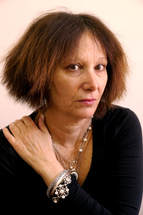 Bio: Vicki Iorio is the author of the poetry collection, Poems from the Dirty Couch, Local Gems Press, 2013and the chapbook, Send me a Letter, dancinggirlpress. You can read Iorio's work in Hell strung and Crooked, I Let Go of the Stars, (Great Weather for Media), The Brownstone Poets Anthology, The San Pedro Review, The Mom Egg, Crack the Spine, The Painted Bride Quarterly, The Fem Lit Magazine, Redheaded Stepchild Magazine, The Paper Street Journal, Poetry Bay, Home Planet News,Concise, Cactus Heart, Rattle on line,South Florida Poetry Journal, 521 Magazine,RatsAss Review, New York Times, blog site, Poetry Super Highway, Eratio Poetry Journal, In Between Hangovers.
1 Comment
9/12/2017 5 Comments Pulling the Shades By Tina NeyerPulling the Shades The first night we spent in our temporary house, the alarm went off at 12:20 a.m. I yelled for my husband to wake up, (he sleeps through so much), and we ran down the steps to turn it off and called the police. I realized that it was a test. Our neighbors dotted the street, the guy next door in his forever lawn chair, in house coat, playing a guitar, the glow of orange from his cigarette, the only light for his face. The next day, I opened the curtains. I sat on the porch at regular intervals and watched. Allying my fears about where we had decided to stay while we fix up our new forever home. The quickest way to disarm people who don't like strangers invading their neighborhoods is to look them in the eye and acknowledge their existence. It's worked for us over the past six weeks. We aren't trying to change them, or the neighborhood. While that first night might have made us feel the fear that seems to be so pervasive in so many places, it has been replaced with reminders of where I grew up. Another neighborhood that still struggles with identity, one side fearful of the other. My husband left the house before the butt-crack of dawn the other morning, trying to beat the day's timelines so he can work on our new house. Our guitar-picking neighbor was out, as usual, holding his nightly court that starts around 9:00 p.m. After John left, the voices eventually died, the day overtook their world. On my way out soon after, I turned from the street to lock the front door. There, I noticed a note sticking out of the mailbox. Written on a piece of paper from a steno pad. It said: Thank you sir for looking out for me love (our neighbor's nickname) I'm not invested in this neighborhood. But I am aware of how pain must play a part in most of the lives around us. Our guitar-picking neighbor who wrote the note, always says hello, sometimes rescues cats, and seems to have a number of friends. And now he reaches out to my husband to thank him, but we don't know why. Others, it seems, attempt to numb the creasing, searing set of their jaws. The woman across the street is a case in point. She is severely bow-legged, her back dipped down into the pain of a thin frame on an unusual body, and she grabs for a seat any time she can. Her eyes hide behind big-framed glasses and when she talks, I think of the old men in Goldie's Saloon down the street from where I grew up. The sound of her voice like too many cigarettes, too much booze and a frog croaking on a hot summer night. A tall, thin man leans against a fence most days on the same side of the street as me. He folds his long arms over his skin-to-bone torso. His hair is long and pulled into a pony tail, exposing a jaw line exact and somewhat sad. He reminds me of the man who lived next door to us when I was a teenager. That man came back from service in the sixties and grew his hair long as a protest against the Vietnam war. He had a reputation as the biggest drug dealer in Northern Kentucky. I never got my drugs from him. But he had a peaceful look that often made me feel safe. Across the street from my temporary home, a life-size statue of Jesus has been employed as a sentry. His left hand is fixed on an exposed, radiating heart. His right hand raised with pointer and middle finger directing attention upward as a reminder that if only you would look beyond the everyday of your existence you might begin to hope. While this Jesus is faded from weather, smirked at by those of us who divorced ourselves from organized religion; he resembles the Jesus who still stands in vibrant color in the church of my hometown. Then there is the man who died. I watched him for weeks, fascinated by the Rat-Pack stature, the Just-For-Men pompadour, and turned up collar of a golf shirt. He'd dance across the street at least once a day to talk to the guardian of the neighborhood, a man who lives peacefully with his wife of forty years. The Dean Martin look alike seemed to sing with every movement. It still astounds me, two weeks after his death when the ambulance showed up, that it wasn't for his aging mother. I hear that he lay on the floor with blood coming out of his mouth. Two women yelled from the porch to call the squad. Now his mother sits alone, head bent, unaware of Jesus just a few houses away. But the one who gets to me the most is the young man whose face reminds me of some romantic notion of a ship's captain. His gnarled and compromised body is supported by a grocery cart with a trash can in it. The young man's arms stabilize him on the edge of the large, green trash bin, filled with plastic bags full of empty pop cans. I got a good look at him yesterday, his legs no bigger around than a child's baseball bat, knees at near right angles. I wonder if they were ever straight legs. His feet hide in construction boots, untied, and clopping along reminding me of the sound of horse hooves. His feet point in opposite directions from one another. What sort of pain does he live with and why? He reminds me of a young man in my hometown, long ago. He didn't need a makeshift walker, the souls of his shoes worn in odd places because of his disfigured stride. I'd watch him, too. Mystified by his struggle to be normal, like the crowd he ran with. The captain of my temporary, transitional neighborhood walks alone, manages his grocery cart-trash can walker and talks into his cellphone, while steering himself with his free hand. When I sit on the porch of my temporary home and think of the new home I'll be moving into soon, I harbor no ill will toward anyone who thinks I am better than them, or their neighborhood. You see, we all live with pain. Some of us just hide it better. I am reminded today of the time I walked out of my front yard with my mother. I was sixteen. We were on our way to the grocery when we discovered the drunk in the gutter, a product of Goldie's Saloon. He was one I avoided regularly. His wiry frame as thin as the wispy hair on his head. My mother stooped down, talked to the man for a moment, and then gathered him up and set him on the curb. While I stood ashamed of her willingness to get into the gutter, she straightened, eyes focused once more down the street to the grocery, and muttered, "There but for the grace of God go I." 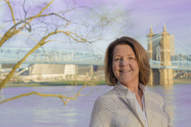 Bio: Tina Neyer is a writer, living and working in a neighborhood near Cincinnati, Ohio. She embraces the attitude that we are all created equal. She has studied addiction both through personal experience and academic training. Tina is an academic tutor in the athletic department at Xavier University. She also is a family mediator, working with all populations who want a better way to solve the issues of divorce and stepfamilies. She is the mother to six young adults. Her dog, Chester loves to sit on the porch with her. Sarah Edwards What if much of what we designed as humans borrowed its form from animals and the earth itself? What if over time and the separation of years from that spark of primary influence and invention we forgot about such similarities? What if we ceased to believe in responsibility, in debts owed to nature, in the shared shapes, weight and air of our world, the whole multi specie/landscape surroundings? What if our fate had always been linked to theirs and we had become experts in forgetting? Sarah Edwards picks up the traces of such similarity throughout her work, stemming from her study of design, Edwards writes: "I saw that the concepts used to create visually compelling content are in large part derived from nature, the golden ratio, weight/gravity, geometry. So why does so much of what we design look fundamentally different from anything found in nature? I concluded that it’s for the same reason we are destroying nature; humans, in large part, have culturally and ideologically separated themselves from the natural world" By creating representations of species as "distorted, glittery, oversimplifications of things that were beautiful to begin with, [they] become metaphors for the ways we distort and oversimplify the function of habitats, ecosystems, and populations the world over." Sarah's art operates on multiple fronts at once, it's not only the brush meeting the canvas, the message and learning moments encoded in the abstraction, the most beautiful part of it, as Edwards puts it, is that "art recounts more than just facts and chronologies; it serves as a record of where people’s hearts are as they get pulled through life." An account of where we stand and what matters most to us, including all that we've maybe forgotten, the shared responsibilities of a humanity tending toward amnesia but ultimately yearning for something more. AHC: What has your own personal evolution towards a life in art been like, are there a series of moments you can recall where this path, this calling, began to become the one clearly marked for you? SE: Art has always been the place where my confidence lies, though whether that translates into making strong work is another story. In school from a very young age, making visual work was my reprieve when I often found other subjects to be nightmarish, so it was never really a question that I would go into a creative field. In the years after finishing school, I continued painting while working in other roles, primarily as an art director and production designer for ad campaigns and films. I think it was my move to New York that finally forced my commitment to pursuing art as a career. The city demands such an enormous output of resources, time, and energy and you really have to fight with your back against the wall to get where you want to be. After a couple of years working 18 hour days in advertising and feeling miserable, I realized that it wasn’t enough to try and fit my work in on the weekends and that waiting until I had “time” was just not going to happen. After one particularly grueling summer of being on sets for multiple films, I reached a level of exhaustion that broke the cycle, I walked away from all other creative work and threw everything I had into painting. AHC: Your work hones in on the ills of our ecosystem, animals and what you call the anesthetized natural figure, which, if appreciated, have the potential of serving as an anti-dote. Could you explore and expand on some of the motivating ideas at work in both the images that you make and the process behind the making of them? How does the idea for you begin and what does its evolution look like during the stages of its development? SE: Our relationship as humans to the natural world is complex and rich with contradictions. My fascination with that relationship has always been the driving force behind my work. That investigation started when I was studying design - I saw that the concepts used to create visually compelling content are in large part derived from nature, the golden ratio, weight/gravity, geometry. So why does so much of what we design look fundamentally different from anything found in nature? I concluded that it’s for the same reason we are destroying nature; humans, in large part, have culturally and ideologically separated themselves from the natural world. I try to create a sense of that separation in my work by using organic imagery, animals, and landscapes that may be endangered or suffering from the effects of climate change for example, and then find ways to represent them as manipulated versions of themselves.. Distorted, glittery, oversimplifications of things that were beautiful to begin with, become metaphors for the ways we distort and oversimplify the function of habitats, ecosystems, and populations the world over. The aesthetic screen that the landscapes and animals get passed through takes away their authenticity, and in that way, the human presence in my work is the aesthetic itself. The “anesthetized natural figure” in a sense also represents the tendency to construct narratives as means of numbing ourselves to these realities. On a less dismal note, the work is also very much about affection for the natural world. I think the ways that cultures through history have monumentalized stunning creatures and landscapes is genuine and heartfelt. I want to pay tribute to that tradition while sending a message that those sentiments also need to inform our actions regarding how we treat the earth. AHC: Who are some of your artistic influences? Is there anyone outside of the art world who has had a huge impact on you and your work or who just generally inspire you on some level, writers, filmmakers, comedians, musicians etc? SE: Graffiti was one of my first big influences, thanks in large part to my brother. Growing up in the suburbs of California it was often the only artwork that I saw on a regular basis on highway walls and on trains. The boldness and graphic style is something that still influences my work. Graffiti helped me recognize the rebellion that art can embolden and the tension that it creates, the artist stating; It is my job not to fall in line. In the art world proper, David Hockney’s landscapes have had an enormous impact on me, along with bold, visceral work from artists like Marilyn Minter, Yayoi Kusama, and Ren Hang. Since my days of having to sit through art history class, I’ve also loved Gothic and Early Renaissance religious paintings.They have always felt like the first western versions of glamorous advertising to me. Outside of art, I’m inspired by outspoken thinkers and educators like Noam Chomsky, Neil Degrasse Tyson, and Rachel Carson who have devoted their lives not only to intellectual pursuits but to sharing and making accessible the perspectives that their expertise provide. More universally, storytellers of all kinds. In film, which shares a more visual link to art, I am drawn to decadents and eccentrics like David Lynch, the Coen Brothers, and Quentin Tarantino. AHC: What do you consider, personally, to be the most sacred and enduring aspects of art? How does it enrich our world and our cultural memory? How has it enriched your own life? In your opinion, what does art, at its finest moments, bring into the world that would otherwise leave us more impoverished without it? SE: That’s a big question! And one that I have spent a lot of time grappling with in the context of my own practice. I had a professor that told me once; art isn’t going to save the world, but I think it can help. It provides such a valuable record not only of who we are and have been but the shifting dynamics that we create and live through as individuals and communities. Art recounts more than just facts and chronologies; it serves as a record of where people’s hearts are as they get pulled through life. If the goal of journalism is to provide unbiased accounts of events, art is its antithesis. What drives people to spend lifetimes voluntarily laboring over something that has virtually no guarantee of ever paying off? Call it what you want, but I think the source of that drive and desire for expression is what “can help,” and what throughout history has provided the sparks that lead to progress and change. For me, there is catharsis in the kind of abstract problem solving that is required to produce a body of work. The challenge of alchemizing technical craft, narrative, and context is engaging at a level that I haven’t experienced with undertakings requiring linear “if this, then that” steps. Creative thought demands a suspension of compartmentalized thinking, and therefore enables a systemic rather than direct view of how the world works. It’s hard to express how fundamentally important I think that is. AHC: What is the first work of art you encountered that took your breath away? SE: Rather than a single piece, I’d say it was the first time I saw an exhibit of Anselm Kiefer’s work. His scale alone is enough to stop anyone in their tracks, but I think what struck me the most is the way his paintings vibrate and move, at times even in the absence of color and distinguishable form. It’s as if torment is seeping out from the paint and haunting whatever room the work occupies. Seeing those paintings in person helped me understand the potential that marks have to communicate profound emotion and tell stories that may not have anything to do with the pictures they make on the canvas. AHC: Do you have any words of advice or encouragement for young artists and other creatives who are experiencing self-doubt in their art, frustration or blocks? What are the types of things that have helped you to move past moments where you may have become stuck creatively? SE: There are a few things that I have to remind myself of pretty regularly; -Success is incremental. The amount of work that happens in-between milestones is usually pretty unglamorous, but that doesn’t mean that the milestones aren’t coming. The worst thing you can do is stop making work, just make something even if you think it sucks. A lot of times the most frustrating periods are the ones where progress is being made but isn’t yet manifested. -Nothing that you do in your studio is a waste of time. I feel a lot of the time like I’m not producing enough or quickly enough, especially in this culture of immediacy. Thoughtful, substantive work of any kind takes time, period. If I’m stuck on something, I put it away and come back to it later instead of getting stressed out about it. The great thing about making art is that it’s yours and you can do whatever the hell you want. -Don’t be your own enemy. It’s a romantic notion to think about the tortured artist who is a martyr to their work, but I’ve found that in reality, that approach is pretty miserable and exhausting. Spending time doing what you love is an enormous privilege despite any sacrifices that may come along with it. AHC: Do you have any upcoming exhibits or new projects you'd like to tell people about? SE: I’ll be showing in Miami at a fair called SuperFine in December during Art Basel. The fair has a great representation of young artists and galleries, anyone in Miami that weekend should stop by and say hi ;) I’m also really excited to be working on a couple of partnerships that benefit conservation organizations. One is with the Kenya Wildlife Trust, that is doing amazing work in East Africa to protect big cat populations and build sustainability in local communities. I am donating a portion of all art sales directly to the KWT and look forward to continued involvement with them hopefully in the region. Locally, I’m working with the Sierra Club of New York by contributing work for fundraising and marketing efforts. All images © Sarah Edwards For more visit www.sarahedwardsart.com/ Follow Sarah on Instagram @sarah_a_edwards 9/11/2017 0 Comments Poetry by Melissa AmatoTo Innocence We are lonely as children, In the wayward crests Of the oceans with, No clothing or coral. Bare as our tar, Like words seeping into our souls. We crave the simplicity, Of the 90’s Percent of the time. We are throwing tantrums again. With protests and picket lines, Standing in circles wallowing, Fighting emblazed with tears In our eyes. Learning more times over and over, Our parents, Among presidents were never right. We are scared in the dark, Of blue violence, In tears gas. Bombs splitting atoms, Yet the lack of science in a single Gunshot. I miss the fields of summer Time lunches. Of how long afternoons Used to be, How long lives used to be. Describing relatives as old. Wondering if we’ll even make it through The day. We are children again. Misguided by power, Money buying more than We can chew. We can never return to innocence, For we have all seen, Ignorance, far too much. Unplug Wired, A frenzy of thoughts blazing, Throughout indiscretions. And uncertainty. Screens lit up with lights, No one’s ever home. Punches of electrical energy, Pulsing through veins, Bursting with caffeine, Pills to keep us alive. We are not personas, Jammed packed with buzzing Bees words, Sweet nectar of lies Can cover the lack of connection. A dial up noise, Giving us migraines Late at night. We can choose. Choice is not a luxury, But a right. The consent of saying, How easy it is to lie, Among sheeps of Followers. He touches my skin with gentleness, No attention glazing over. Unplug into each other. Returning to something dark, Yet wonderful. When I Wrote My First Poem When I wrote my first poem, I layed on my floor with my hands out to my sides, Bloodied with writing so furiously. I layed underneath sheets with hand held lights, At three in the morning, Scribbling rubbish onto paper, Rhyming endless sentences In order to captivate, The audience, Of my teddy bears. Hallways were runways of hatred it seemed, With undiagnosed misinterpretation, Of a high school student. No one was listening to the fools who wrote Verse. When I wrote my first poem, I was illiterate. Sounding off vibrations as a child, Screeching into the air to figure out if anyone, Just anyone might be listening. They were not. I knew. When I wrote this poem, I laughed into the words scripted onto the page, As all of my electronic correspondence were of, Denials into any type of Salon. I was deemed too new, Too young, Always. “Children don’t have feelings, They don’t feel. They’re simply not human after, All.” My teller using the term, “It sounds like you swallowed an adult,” After hearing my gospel. They weren’t interested in hearing, My woes. It was understood as scribble, It still is today. What has she suffered through? What does this child know about, Suffering? What did I ever know, Knew about this poetry I wrote? Bio: Melissa Amato is a 23 year old poet who grew up in the rural town of Albany, New York. After moving to Queens, New York to attend university at St. John’s University, Melissa began to immerse herself in the slam poetry culture of Brooklyn and Queens. During this time, Melissa grew her online presence by writing for popular Manhattan websites PuckerMob and Green Rush Daily. Her article, “Why Relationships Don’t Always Have To Take It Slow,” was featured in the Millennial book, Trying to Adult. Melissa moved to Toronto in the year of 2016 with the love of her life. She began to fall in love with the culture of Canada, which changed her life forever. Her writing is influenced by her Hindu faith, as well as her experience “growing up” in both the United States and Canada. Her debut as a Toronto poet can be seen in the second edition of Blood and Bourbon with her poem, “Reincarnation,” as well as through performances at her own open mic creation, “My Name Is…”. 9/10/2017 0 Comments Poetry by Thomas FucaloroHow To Spoil Other People's Fun Again politics slow meaty flaps puffy white whimsi- cal-l me I get off at 9 and can get off again at 10. Strange how beautiful a drain is but not the bother I remember that lullaby the one you sold me and it was fuzzy but complete with out end. Did you dimple when the moon struck a chord often meant for connecting? Red plastic cups filled with identity shadow the night with ha-ha-bingo who's got the win- ning because the losing is boring me to wealth of ignorance deplorable yet dimpled. I couldn't wait to elephant explode all over bodies raw and unbrella'd let the ugh pour unto thee as I count the days this will take to remove the sake of me and only. Empathy is this balloon that only floats when someone has fallen asleep at the wheel, that steer in the direction meant for their personal loved ones breath drunk with habit empty and empath izing. (Title-George Carlin Book Club Series) Famous Bullshit Stories I remember this one time I became president for a day because aliens had taken over my body and made my outside layer of skin morph into an outside layer of someone else, doughy, pouty, wrinkled by the prosperity of more wrinkles and such word play like that will rub the streets raw as headlines dismay the proven we hyena waltz back to hotel rooms rubbing the sheets raw and I remember this one time you took over my body like aliens you removed me pretty quick giving me to someone else for their purpose is a dish best served with waffles and ice cream. (Title-George Carlin the Book Club) Caring For The Seated Sometimes the stand isn't worth the cushion it's rising from. Upright bass pluck your shoulders-spine to your irreverence for bent things you yarn a knit into consciousness and the surgeons laugh because they have no hands and then you laugh because you have no spine and bent behaviors on how backward forward should go. You are not a patient just a passerby incision for your hands to hold. Now you’re in the supermarket, half wound open, lettuce a shopping cart full of plums while you eat you become the surgeon, ripping apart this upright bass, carving a boat, swimming in the laugh- ter it's rising against. (Title-George Carlin Book Club Series) 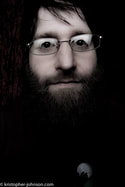 Bio: Thomas Fucaloro is the author of two books of poetry published by Three Rooms Press, most recently It Starts from the Belly and Blooms, which received rave reviews. The winner of a performance grant from the Staten Island Council of the Arts and the NYC Department of Cultural Affairs, he has been on three national slam teams. He holds an MFA in creative writing from the New School and is a cofounding editor of Great Weather for Media and NYSAI press. He is a writing coordinator at the Harlem Children’s Zone and lives in Staten Island. His new book, Depression Cupcakes takes a look at mental illness through the eyes of Ars Poetica. 9/9/2017 1 Comment Poetry by Suzanne BailieESTRANGED You are of my blood. Yet, we are cold oceans apart. A needle’s width means miles and years. I’m told blood is about 75% water. If so, can the currents of red hallowed love that flows hidden through our ancestral DNA help us find our way back? UNANSWERED I can’t answer your call. The cloud of hopelessness clings too heavy too dark for me today. I’ll bind myself in a blanket, and lay awake all night. Pleading with your guardian angels to get their asses in gear. Because, I simply can’t anymore. 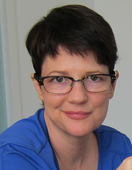 Bio: Suzanne Bailie is a playwright, artist and poet. Her short plays and monologues have been produced across the United States, United Kingdom, South America, South Korea and Australia. Suzanne’s inventive and quirky poetry continues to be highlighted in many poetry anthologies and magazines. Hand To Mouth - raw organic pigments on paper - 11" x 14" - 2017 "I'm motivated more by feelings than I am by ideas," says Erdrich. "I ask myself, what does it feel like to inhabit this body in this climate." Here one finds art which starts from the heart before travelling to the head, rather than make feelings secondary, they are made primary. Loren's diverse work spans many techniques and mediums, the most recent of which are a series of paintings using raw organic pigments a friend brought back from Morocco. "The names of these colors intrigued me: lapis, turmeric, certain flowers, crushed snails, saffron, cobalt," says Erdrich. "They brought to mind a preciousness I, and perhaps my subjects too, felt lacking - both in substance and in material." The water destroying the rigidity of the paper, becomes a transcendent accident, a synchronous fate: "Here again is that push and pull between control and mayhem. I can only corral it and find peace in what ultimately occurs. It is impossible to be perfect. It is a blessing." Play becomes a central and sacred aspect of Loren's approach: "a sense of freedom, trial and error, enjoyment, flexibility. I love that the act of making can be momentarily separated from the multiple layers of history and meaning that embrace an artwork in it's analysis." From uncanny, sometimes gruesome ceramic, Bruegelesque dream-like figures, to the marriage of text and art on I Take Back the Sponge Cake, a choose-your-own-adventure book in collaboration with poet Sierra Nelson, we asked Loren about the motor at work beneath these wondrous, singular outpourings of artistic vision, between control and mayhem, that silent hour where anything at all is possible, and the work takes one completely by surprise. AHC: What has your own personal evolution towards a life in art been like, are there a series of moments you can recall where this path, this calling, began to become the one clearly marked for you? Loren: I'm grateful that art was incorporated into my studies from childhood onward to significant degrees. I remember watching my babysitter write my name in bubble letters and wanting to be able to do it like she did. Once I got to high school, teachers and mentors really let me do my own thing and I skipped over a lot of the basics and moved into solo projects. By the time I got to college I had a strong background in painting, drawing and printmaking but I had no concept of what it meant to be an artist. I still considered it to be more a skill I had, rather than something I could give the my whole focus to. And so when I graduated undergrad and was quite lost. I traveled overseas and in the States for few years until I made the decision to go for an MFA. That decision was a turning point for me as it was the first time I outwardly recognized my art practice not just as a 'skill' but as a 'calling'. This meant I needed to consider my art making practice as sacred. I went back to undergrad for a few years to do some extra portfolio work to prepare me for grad school, this time in Chicago, and later got my MFA overseas in Ireland. Exit Strategy - wood and steel - 2011 Unreasonable cover (and) Sometimes I am broken in two - wool and burlap - 2009 AHC: Could you explore and expand on some of the motivating ideas at work in both the images that you make and the process behind the making of them? How does the idea for you begin and what does its evolution look like during the stages of its development? Loren: I'm motivated more by feelings than I am by ideas. I ask myself, what does it feel like to inhabit this body in this climate. Since my most recent body of work has used found imagery as source material, I often work from photos I find on the internet. I know many of these images now open for public consumption were once private material. I ask these subjects too what it feels like to inhabit their bodies - and I try to answer in a manner that is not didactic. I choose images to work from based on the effect they produce, rather than the actual thing/event shown. In each image I find a flicker of the struggle between control and mayhem, which is a condition I identify with. My choice of medium is also informative. When a friend came back from Morocco this year with unmarked vials of raw organic pigments for me I was quickly enthralled. The names she remembered intrigued me: lapis, turmeric, certain flowers, crushed snails, saffron, cobalt. They brought to mind a preciousness I, and perhaps my subjects too, felt lacking - both in substance and in material. Firecracker - raw organic pigments on paper - 22"x30" - 2017 When brushing these pigments onto wet paper, the color shoots through the water and over the page. The water itself destroys the rigidity of the paper and destabalizes all boundaries. As it dries it does what it wants - chance is a large part of the process. Here again is that push and pull between control and mayhem. I can only corral it and find peace in what ultimately occurs. It is impossible to be perfect. It is a blessing. Sought Heavy Thick and Rough - raw organic pigments on paper - 14" x 11" - 2017 AHC: What was your collaborative experience with Sierra Nelson like, how did the two of you first come up with the idea for I Take Back The Sponge Cake, and because so much of the artistic experience usually takes place in solitude, I wonder what the marked differences are in collaboration aaas compared to creating solo? Loren: Sierra and I met while we both spent a year as staff at the Vermont Studio Center. Our studios were next door to each other and we shared an apartment too. I was intrigued by Sierra as a poet with an incredibly strong visual sensibility and a background in collaborative performance - and I think likewise she found me intriguing as a visual artist who avidly consumed and found inspiration in fiction. At the time I was making a series of wearable sculptures that transformed the wearer into hybrid animal-like creatures, and hundreds of small 4x6" drawings. We began to speak about ways we could collaborate and Sierra took some of my drawings into her studio to write from. Once I had the idea of us creating a choose-your-own-adventure book things moved quickly. Having since tried many times to collaborate on projects with other artists, I now realize how amazing this process was with Sierra. In my other attempts at collaboration I have often felt a sense of dissatisfaction with the end result - as if the whole somehow did not properly represent all the pieces. With Sierra, our collaboration had the necessary element of magic to it - I trusted Sierra completely with visual matters and similarly she trusted my opinions on the text. This allowed our process to remain consistently fluid and balanced. Perhaps this was aided by the fact that our creative lives were so embedded and in such close proximity. In the years since I Take Back The Sponge Cake we have found collaborating from different coasts to be a very different animal. In reaching for you I became something new - Wool and galvanized steel - 33" x 12" x 18" - 2009 Malleable Me - Ink and watercolor on paper - 22" x 30" - 2015 AHC: Who are some of your artistic influences? Is there anyone outside of the art world who has had a huge impact on you and your work or who just generally inspire you on some level, writers, filmmakers, comedians, musicians etc? Loren: Oh man. Marlene Dumas, of course. I love the way she writes about her own work - I am constantly like 'Yes! Me too!' Also Allison Schulnik, who's use of material and scale I admire. Goya's Los Caprichos. I also follow tons of artists on Instagram, and really use it as a tool for inspiration and discovery. I have a thing for untraditional ceramics but it is a medium I have yet to have the opportunity to really explore, so I follow artists who are using this material in ways that excite me (Maria Boij, Joakim Ojanen). And painters like Nicole Wittenberg. I am also hugely inspired by text - often in ways that can totally rival my need for visual inspiration. I read constantly, usually fiction with a bit of poetry, but some non fiction as well. Recent authors I have loved: Anthony Marra, Gabriel Garcia Marquez, Hanya Yanagihara, Ta-Nehisi Coates, Joan Didion, Maggie Nelson, Anne Carson, Sierra Nelson - really I could go on and on. These lists are in no way exhaustive. There was never any turning back - Watercolor and acrylic on ceramic with mixed media - 2014 AHC: What do you consider, personally, to be the most sacred and enduring aspects of art? How does it enrich our world and our cultural memory? How has it enriched your own life? In your opinion, what does art, at its finest moments, bring into the world that would otherwise leave us more impoverished without it? Loren: In it's finest moments I think an art work forces us to look beyond the surface - to weigh all that is seen with all that is unseen, to consider both the result and the process, the experience and the memory. Growing up I struggled with the incongruity between the physical world of surfaces and the unseen world of feelings I experienced. For years I tried to physically shape my exterior body and surroundings to match what I experienced within. Nowadays, art is a way to play with these feelings and give them a visual shape without inflicting those ideas on my physical body. In fact, I see 'play' as one of the most sacred aspects of art making. My art making practice is quite rigorous and yet in practice it shares many common characteristics with play: a sense of freedom, trial and error, enjoyment, flexibility. I love that the act of making can be momentarily separated from the multiple layers of history and meaning that embrace an artwork in it's analysis. Little Death #8 (Blue) - watercolor on paper - 15" x 20" - 2015 AHC: What is the first work of art you encountered that took your breath away? Loren: I have a memory of being 9 or 10 and my parents taking me to an art fair that was held in a shopping mall near where I grew up. I was wandering on my own and became enthralled with a display of paintings that were painted very thickly with oil paint. There was so much dimensionality and texture to these paintings and I had never been so close to anything like them. I remember staring and staring and then bringing my finger to a painting so I could touch it. Unfortunately the painting was still wet so when I touched the painting my finger actually slid creating an inch long smear. I ran away of course (no accountability) but I remember the whole experience with such heightened emotions. The artist, the material, the process, the ephemerality - it all became so clear to me in that moment. I think that was the first time it all felt real. What does it mean when a party girl cries? - plant-dyed wool - variable - 2007 AHC: Do you have any words of advice or encouragement for young artists and other creatives who are experiencing self-doubt in their art, frustration or blocks? What are the types of things that have helped you to move past moments where you may have become stuck creatively? Loren: Everyone experiences self-doubt and periods where it feels like nothing good is coming out of you. I mean, I experience this, so I assume it is in all of us. And I don't know if there is any way out of it except to just walk through it. Cry, get angry, tear things up, delete social media, even give up on art in general even - as long as you get back in there the next day. If you need to incubate and stop applying to things or showing your work publicly, do it. Take that time to create just for yourself. To me all that matters is you keep working. Keep making. In my experience these times come and go and come and go again. This knowledge doesn't make the feelings much easier, but rationally I can expect that one day it will shift again. A friend of mine is always reminding me that the invisible work is just as important as the visual. The invisible work occurs when we might be just sitting in our studio reading, or cleaning up, or maybe when we are going gallery hopping, or watching an inspiring film, etc. My friend reminds me that all of it is necessary. And the invisible work feeds the visible. Playing games - Watercolor and acrylic on ceramic with mixed media - 2014
AHC: Do you have any upcoming exhibits or new projects you'd like to tell people about? Loren: It's been a busy summer with shows in Philadelphia, Detroit and LA. Usually after a bunch of exhibiting I naturally enter a period of incubation. This is when new bodies of work are formed. Bushwick Open Studios is the next thing on my calendar (September 23-24 @ 59 Jefferson St #304 in Brooklyn, NY) which is an event I really look forward to each year. I love having people to my studio to view the work - it feels the most honest and authentic for people to see the pieces as they are in the studio: littering the floor or pinned on top of each other along with the source material. All images © Loren Erdrich (provided courtesy of the artist) For More visit okloren.com/home.html 9/8/2017 0 Comments Poetry by Eve KenneallyA Grasp Everything I do, I do for a body. I don’t know whose. I crave markings for the same reason I can’t find my way out of new buildings: I need identifiers. The familiar half-slants when I dream; my house is no longer my house, though ultimately I wake and own nothing. I’m not particular. I just want marble countertops to cry on. If a person has breached their gaze for me, it lasts the length of a greeting – then leans fast into ritual, to steer me through; even as it weakens my lungs, even as I leave earlier to miss the same train. This whole city a humming swollen lip of June, as ritual, to keep us circling. To keep us thinking, I am so alive it stills me. Every mannered, droning part. In the Hospital, Time is a Stillness Slow warning. Stranger strapped to gurney for hours. I know this chair. My grandmother says, I’ll regret covering up these shadows. She says, You have to know how they build their cities before you visit. We say, Eat. We say, We’re sorry. Those couldn’t possibly be birds. I skip out on visits & lose most of my time: a slow trance in reverse, each moment its own steel crawl. You do these things til you dull, then you do them again – a dreamless gathering. I see this thing I throw my body into & am all animal, wired wrong. Instincts: half-survival, long numb. I lived in my head for years. He was calm & spoke to me, an old dialogue. It made me sick. Another Elegy I remember that nobody drowned: collect things not to read them. Part of learning how to think is in trances, is knowing we have no right to be here. Half-spells brought with measure. This can’t be survival – blood, nearly human. It was your face I wanted; something of significance. A wet towel rolled and sapped of color. The smallest men look backwards. The rest we deserve. Even if it’s pretty – even if it’s around the neck. Some Might Call This Progress If this is a poem about loss, let’s end it here. You dance, I lay unseen, litter wrapped my ankles. There’s something I need, in a post- romantic way: thieving is not insisting. Look in a mirror. You’re going to thank me for it. Deer fever aches sharp & ready, the borders exposing all those faces at their picnics wanting everything but window screens. Don’t call me a wildflower. Don’t tell me I’m thriving. These things are made impossible by others. 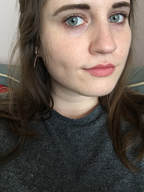 Bio: Eve Kenneally is a New York-based freelance writer and recent alumna of the MFA program at the University of Montana. Her chapbook "Something Else Entirely" was released in January 2017 by Dancing Girl Press. Her poems have appeared or are forthcoming in Salt Hill, Whiskey Island, Yemassee, Bop Dead City, decomP, Stirring, and elsewhere. april 4. beginning breakfast is served i wake from full sleep to coffee, tea, water? watched manchester by the sea was told it was a real cryer lost one tear & thought what if i walk but don't feel a thing is this what i’m most afraid of? a red line drawn across the sky grows wider blurring at the edge the packing the practice walking the lists & the lists & the goodbyes the words of advice the closing my apartment door the leaving the boarding this feeling everything but real so my hope so my fear may i be woken woken enough to be taken by it all april 5. descending the pyrenees into roncesvalles there is chaos in the forest, maximilian the german said how else would it be that the same kind of seeds, fallen on the same kind of soil would make such different shapes of trees aren't words much the same much the same how they fall how they are given spoken read spoken read heard or seen april 6. only, let me be listening with a keen and present ear to stories, the wind chirping bell tolls, horse hooves walking sticks, misunderstood languages, the holy spirit, my heart, the quiet part of it my hands, my feet and my fear of it all april 6. to be resonant def: resonance… a resounding from the sides of a hollow instrument of music a sound returned (we, are musical our purpose, taking sound returning it out from our hollowness) april 7. til it is done today. a day of grace as every day before it grace to rise, grace to walk grace to listen, grace to speak grace to take each moment as a single step one foot in front of the next april 8. pamplona sounds of the city draw me in and wring me out water spinning from a rag pulled tight it seduces me this celebration in the square, friends parked along the stairs to the cathedral de san francisco cerveza glasses in hand chatter & laughter gathered in the flood of noise i am caught in feet bound, staring at the chaos & order around today it must roll off me, cool sweat keep walking april 9. small change five o’clock, the bells just rang heat waves carry pilgrims over ripples on hot roadway tired, limping, foot weary i know the feeling even small change can bring such pain for a short time if i may paraphrase, what rilke says it is the difficult things we must tend towards those ones worth doing yes even small change can bring such pain for a time  Bio: Courtney Hartman is a singer-songwriter and a member of the Grammy-nominated string band Della Mae. Her first solo album, Nothing We Say, was released last year. These poems and photographs are from the first six days of Courtney's 40 day pilgrimage along the camino. For more information please visit www.courtneyhartman.com. Yūgen, a Japanese aesthetic of deep awareness; to pick at the edges of our seen and unseen world, pull back from the gloss and dig for the gleam, some authentically weird light within, a feat harder and harder to imagine possible in our fast rushing world. In the midst of all that makes this difficult for us, Zubko creates spaces that halt us in our tracks, tugging at strings of imagination left dormant in childhood winds, long ago, maybe a restless spark of curiosity emerges, grows into the place where we are now, we lean in, we want to know more. "I remember the first time I observed someone enter one of my environments (Winter's Core)," Natalia says, "and the person exhaled slowly, their shoulders relaxed, and they just eased into the space." We all have the power to be embodied even if it most often seems the opposite. "I often think about how we have a choice in how we want to be in the world." Zubko says. "The fast-paced and speeding up doesn’t make it always feel we have a choice... we just need to be reminded that the awareness, quiet, sense of wonder, calmness is something we “know” and is a possibility, a choice we can make and cultivate." Zubko's site responsive environments immerse people in a living-breathing art-light come alive, inside and out, leaving traces of possibility in their wake, of inner navigation and soul travel, collective and individual dreaming, a quiet pause in a day that doesn't seem to want to end. Art isn't just something we observe, it's also something we take home with us, something that helps transform the way we see space or color or the world itself. Natalia Zubko creates stepping ladders into these spaces where dreaming ourselves isn't so odd or unlike us after all, it might just be the most natural thing about us. AHC: What has your own personal evolution towards a life in art been like, are there a series of moments you can recall where this path, this calling, began to become the one clearly marked for you? Natalia: Art was always part of my life, one way or another – mostly drawing. I never “knew” I would be an artist. It wasn’t until I took a 3D Design class my senior year of college that something clicked. I got to use my entire body to be in space and redefine that space. It was problem-solving in such a physical way. This made sense to me (vs. painting which always felt too hand-oriented and I could never mix the colors I could see in my head!). I also had a series of teachers/mentors, when I look back on it, could see the path for me before I did – encouraging and guiding. AHC: Could you explore and expand on some of the motivating ideas at work in your art and the process behind the making of them? How does the idea for you begin and what does its evolution look like during the stages of its development? Natalia: There are a couple facets to my work but, they are all interrelated – they feed each other. I oscillate between smaller works, collages, drawings, sculptures, and large site-responsive environments. A material, found shapes, forms or objects, some specific element in a space or architecture, something that feels micro but could be macro or vice versa, or the way light hits something might grab my curiosity and the seeds are planted. The smaller works I often think of as “Studio Work.” (Briony Fair started discussing Eva Hesse’s small works in this way) The work isn’t necessarily a model for something larger, or a specific sculpture in the traditional sense, they are the thing themselves – playful with intent engagement - not trying to be anything else but they hold importance in the process of the overall work. My site-responsive environments are influenced by a combination of the discoveries from the studio work with something about the space that I am installing. If possible, I like to visit the space to get a physical sense of the surroundings. Photos - not only of the space but particular elements that call out – the color of a flower in the peripheral vision, the shape of a long skinny window, the way a path subtly curves on the ground, etc. I print out the photos of the space and start drawing shapes, forms, colors directly over the photos. This is a very generative – whatever idea comes up, I sketch it into the space. Once forms and proportions that feel exciting start to take shape, I make a physical, scaled-down model of the space with foam-core. I’ve been asked why I don’t do these models in a computer 3D rendering, again, it goes back to the physicality…building the space and seeing the space in the actual 3D. The model allows me to work out more specifics and see the work in better relation to human-scale. Once the idea is solidified, the project planning and organizing gets underway. Graph paper renderings of plan & elevation drawings, scaling up templates, figuring out how much material is needed, budgeting, determining the order things have to be done, etc…LOTS of lists! This part is less “creative” and more project management but, in some ways, it is part of the overall problem-solving process! AHC: Working with the Japanese concept of yugen, deep awareness, as you do, I am wondering if you see the trajectory of our current speed and hyper technology environments as working against the potential and importance of cultivating such an awareness? Do you hope that by creating these immersive environments and the encounter people have with them, we might build into our memory and cells an enduring, unconscious desire to do so? Natalia: Absolutely (on all questions!) That is one of the reasons I often make works that attempt to slow the viewer/participant down, physically. Not in an abrupt way, but in an often more subtle way. A teacher once referred to my work as “intimate minimalism.” I remember the first time I observed someone enter one of my environments (Winter’s Core) and the person exhaled slowly, their shoulders relaxed, and they just eased into the space. This seemed like a natural reaction to experiencing the piece as the space allowed for it, probably without them consciously realizing it. I often think about how we have a choice in how we want to be in the world. The fast-paced and speeding up doesn’t make it always feel we have a choice. We most definitely have embodied knowledge but sometimes we just need to be reminded that the awareness, quiet, sense of wonder, calmness is something we “know” and is a possibility, a choice we can make and cultivate AHC: Who are some of your artistic influences? Is there anyone outside of the art world who has had a huge impact on you and your work or who just generally inspire you on some level, writers, filmmakers, comedians, musicians etc? Natalia: Off the top of my head: An assortment of old hand-drawn science books (physics, astronomy, geology, etc) Poet, Mary Oliver Books on Light and Shadow Japanese Ikebana philosophies Brian Greene - Elegant Universe Ed T Hall – The Hidden Dimension Bachelard - Poetics of Space Books on architecture and landscape (with cross-sections, and drawings) Fred Sandback, Robert Irwin, James Turrell & the California Light and Space artists from the 60’s and 70’s, Eva Hesse, Nancy Holt (and other varied Land/Earthworks Artists), Alice Aycock, Martin Puryear, Numerous minimalist artists, etc, etc, etc…. (Of course, after we finish this interview, I will think of more!) AHC: What do you consider, personally, to be the most sacred and enduring aspects of art? How does it enrich our world and our cultural memory? How has it enriched or altered your own life? In your opinion, what does art, at its finest moments, bring into the world that would otherwise leave us more impoverished without it? Natalia: This question can be complicated (depending on how one defines art). Art can ask us to examine humanities shadows or bring us delight – and everything in-between. Its power is in its range and potential – reflecting the entirety of the human experience. That is a tremendous responsibility! As cliché as it may seem, art (creative work) is a life force. It is a well that flows and gives energy – both to those who create and those who take in the work. It is a space that can give the widest range of voices a platform. Like poetry, writing, dance, music, etc, the artist take on deeply-rooted often tough questions, engage in a process so fully that what filters through is a way to connect to others, understand something, and communicate - and those who pursue experiencing art works are often seeking the same (whether they are always aware of this or not). If this were so easy, artists would make one thing and be done! But questions beget questions and curiosity leads us down paths that require intense problem-solving. On a side note: I still lament the moment in time where the Arts and Sciences were separated. (Except in our higher education degrees that still point to that connection on our diplomas) Both “fields” are attempting the same things but through different approaches and lens. Why would we limit ourselves to one approach vs allowing ALL possible tools to be at our disposal to figure out and process the tough questions? For me, it is about tapping into a sense of wonder that connects us and puts our humanity in perspective - this seems ever more important in the world we are currently navigating. AHC: What is the first work of art you encountered that took your breath away, that lit a fire in you? Natalia: Hmmmm, I was exposed to art early on. My parents weren’t artists, but appreciated art. We had art books around the house and went to museums… Renaissance Art / Rembrandt / Vermeer. Later, as I was exposed to more modern and contemporary works, I felt drawn to Minimal Art, art the used Light as a material and atmosphere, and Land/Earth works – opening my eyes to the kind of work possible under the category “Sculpture” was exciting! As I mentioned earlier, Fred Sandback was one of the first “contemporary” artists that I was in awe of – the way he redefined a space on such simple, sublime terms. AHC: Do you have any words of advice or encouragement for young artists and other creatives who are experiencing self-doubt in their art, frustration or blocks? What are the types of things that have helped you to move past moments where you may have become stuck creatively? Natalia: You are NEVER stuck. Even when it feels like there is no solution, there always is. Going back to the things that bring you creative delight, no matter how small, and you will find your way out. For me, it is slowing down to observe beautiful moments of light around me, reconnecting with my close friends, reading something inspiring, travel, and playing with a new material. I’ve told this story to young artist: I often use circles in my work. I gave myself the challenge to make a work without circles. Yet at the end, the entire work ended up being one giant circle! You can’t run from yourself, the questions that keep bubbling-up to solve, or the way in which your body is engaging in those questions visually. Become aware of and know your strengths and weakness and use those strengths to their fullest potential! Self-doubt is inevitable. There are too many external and internal preconceived notions about how a life in the arts should “look.” None of them are usually correct. But, fully engaging in your curiosity, finding ways to stay grounded, and listening to your inner voice (as my sister once reminded me, your inner voice will never yell at you!) will lead you through your times of doubt. AHC: Do you have any upcoming exhibits or new projects you'd like to tell people about? Natalia: I do! I have an outdoor sculpture in a group show, Outside, In, at Felician University in Rutherford, NJ in mid-September through then end of November 2017. This last winter I was on sabbatical researching the Aurora Borealis in Northern Scandinavia. (For more information here’s a link to my kickstarter video from Nov 2016! https://www.kickstarter.com/projects/2048584874/wonder-sense-channeling-the-northern-lights) Part of this research kicked-off a collaboration with composer, Beau Kenyon. As I have been starting to develop work from my research and foster this new collaboration, 2 projects have emerged so far! Both works think about Intimacy and Vastness - how a space can create intimacy and sound vastness or vice versa. In November/December 2017 at AREA Cambridge (unum gallery) near Inman Sq in Massachusetts will act as a laboratory space to start to bring our collaboration into the physical world. And in March of 2018, I am developing a site-responsive environment for Kingsborough Art Museum (KAM) at Kingsborough Community College, NY. wondersense @ KAM - This will be the first big installation bringing my Aurora research and collaboration together! For more visit www.nataliazubko.com/images/ All Images © Natalia Zubko (Provided courtesy of the artist.) Notes on the images: wandersense, 2014-2015 Mixed Media (Insulation Foam Board, Lights, Mylar, Gels, Denril) Room: 40’w x 40’ L x 18’H – 6 x 2-sided light boxes ranging from 30’ L to 18’L Site-Responsive Environment -Missouri Southern State University Spiva Gallery, Joplin, MO Approaching Sempiternity, 2015 Mixed Media (Wood, Insulation Foam Board, Structo Lite, Lights, Dryer Sheets) Loading Dock: 13’w x 36’ L x 6” to 4’ deep Site-Responsive Environment – Brooklyn, NY Winters Core, 2010-2011 Mixed Media (Wood, Dryer Sheets, Lights); Truncated Square Room approx 14’w x 13’L x 8.6’H Site-Responsive Environment – Islip Art Museum, Carriage House, Islip, NY Core Essence, 2005 and 2013 Mixed Media (Dryer Sheets, Lights, Wood) 30” x 16” x 6” Inside Industry, 2011 Mixed Media (Lights, Motor/Fan, Mirror, Foam Core, Paint); Full installation: approx 24’L x 16’w x 14’h - Center broken column: 10’L x 2.5’dx5'h Site-Responsive Environment - Brooklyn, NY Thinking about the history and potential of what may be “inside” the industrial space of the gallery, I replicated 3 columns and “opened” up the center one to discover what the building may reveal: an 8ft Kaleidoscope. Pushing the button activates the lights and mechanical fan that causes the inside of the kaleidoscope to turn and whirl. Magnetic Pulse, 2014Rockite Cement, Stir Straws, Wood Beads; 2.5” x 2.75” x 2.75” Cultivate, 2015 Mixed Media (Polystyrene, Pins, Tubes, Denril, Light, Velvet Paper); 132” x 12” x 12” Metanoia, 2004-2005 Cut Drinking Straws, Wire Mesh, Light, Cloth; 28” x 22” x 28” |
AuthorWrite something about yourself. No need to be fancy, just an overview. Archives
April 2024
Categories |
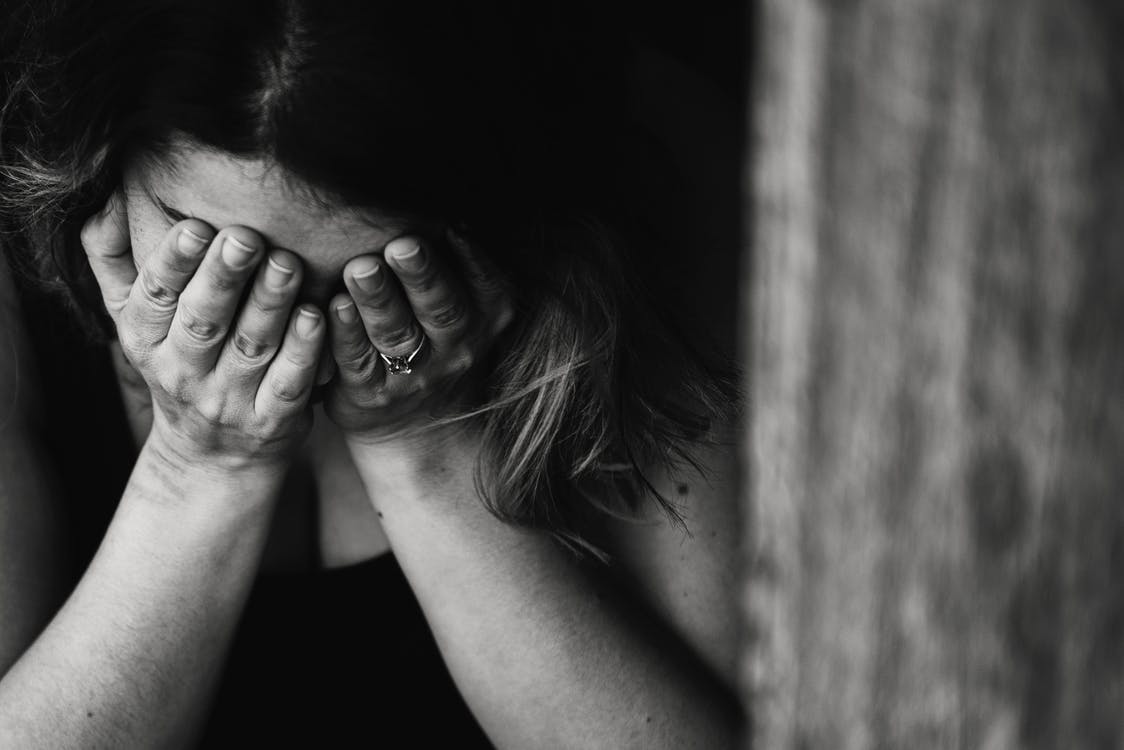
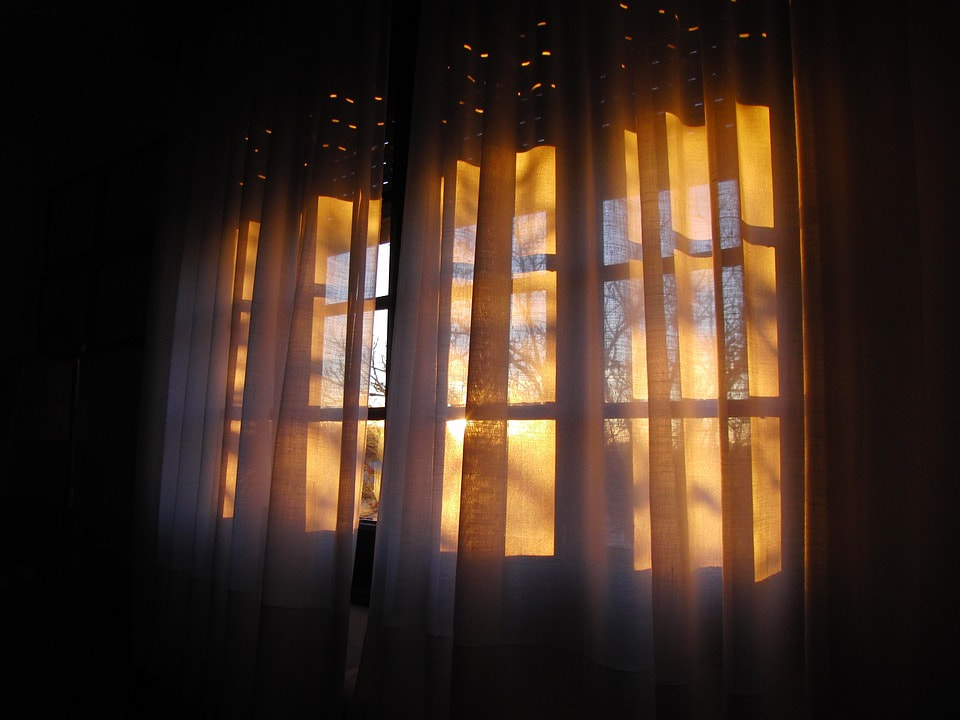
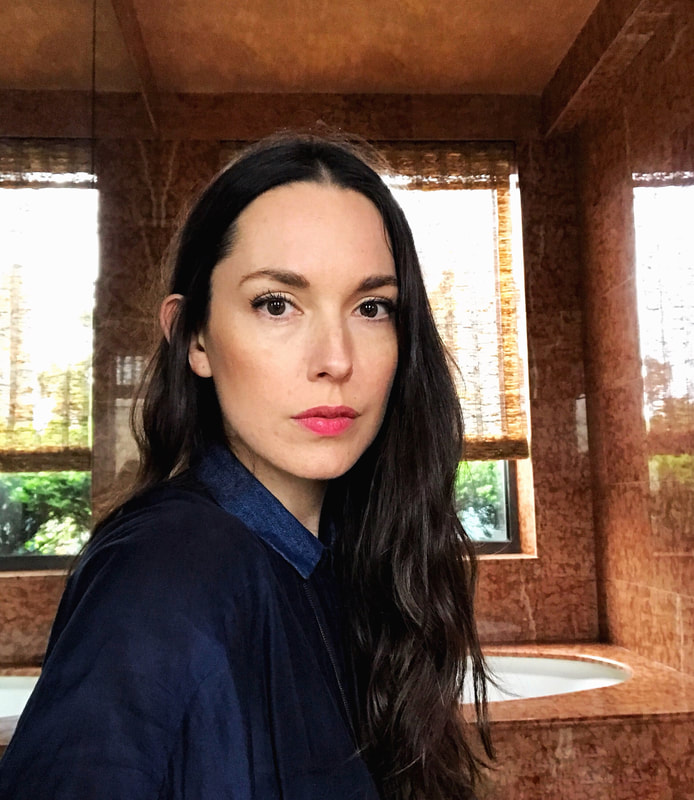
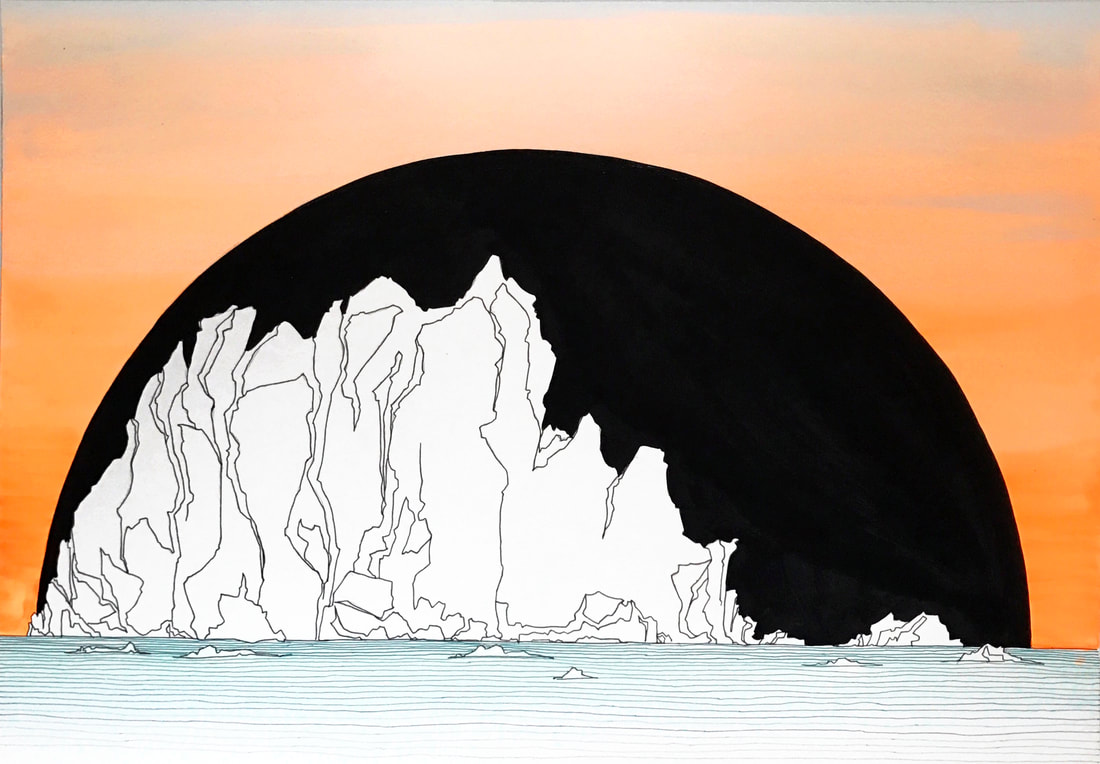
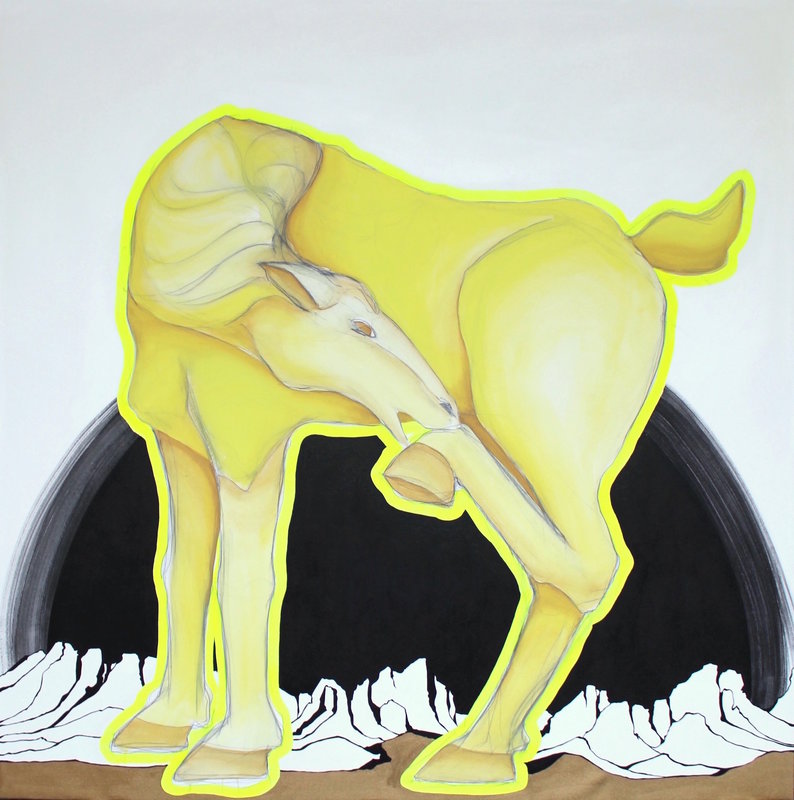
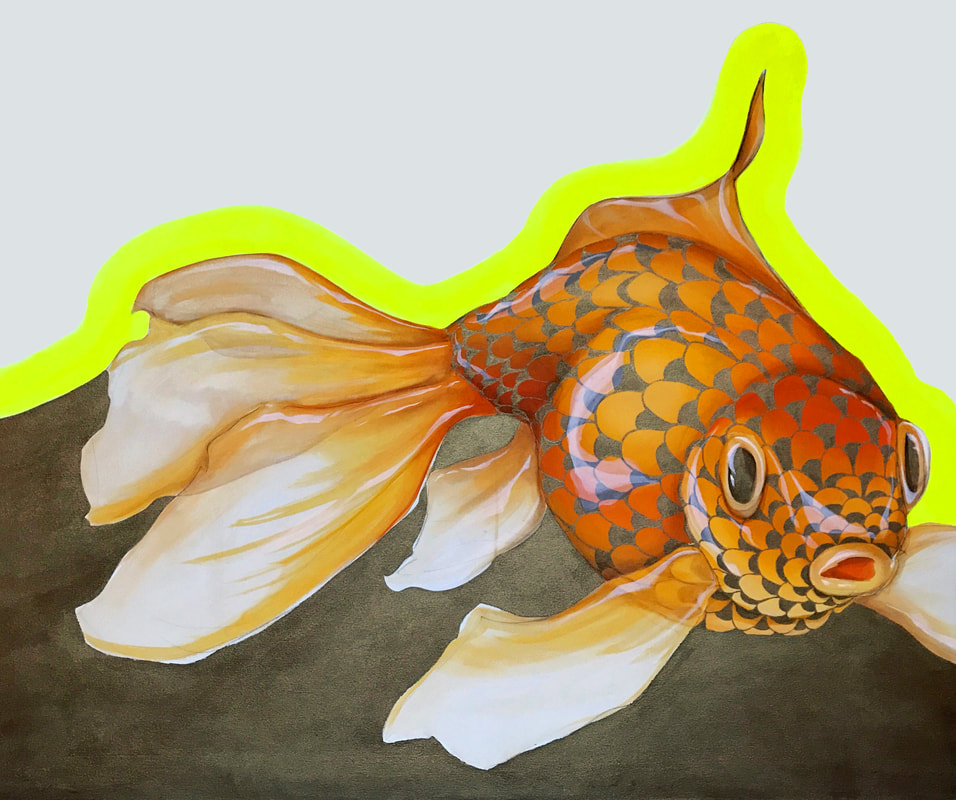
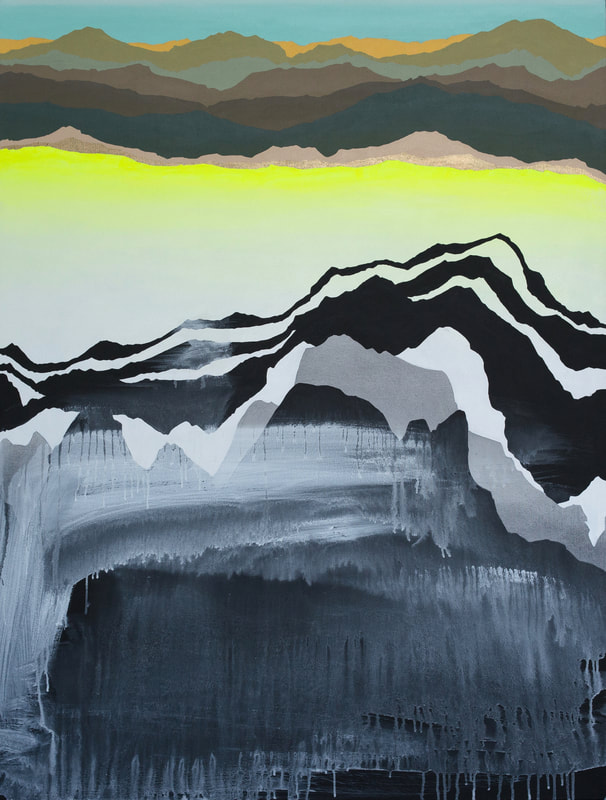
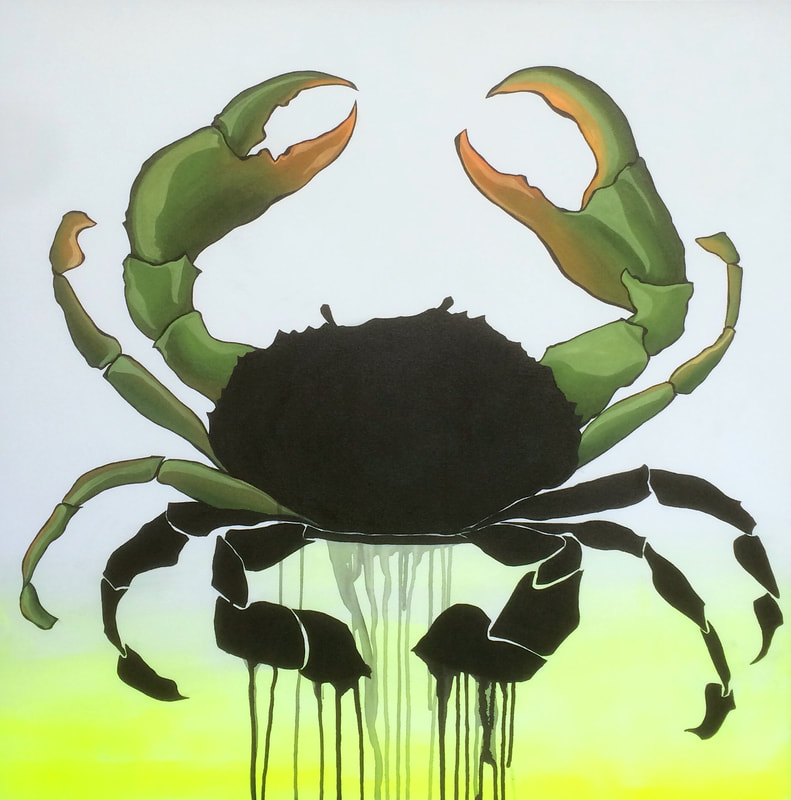
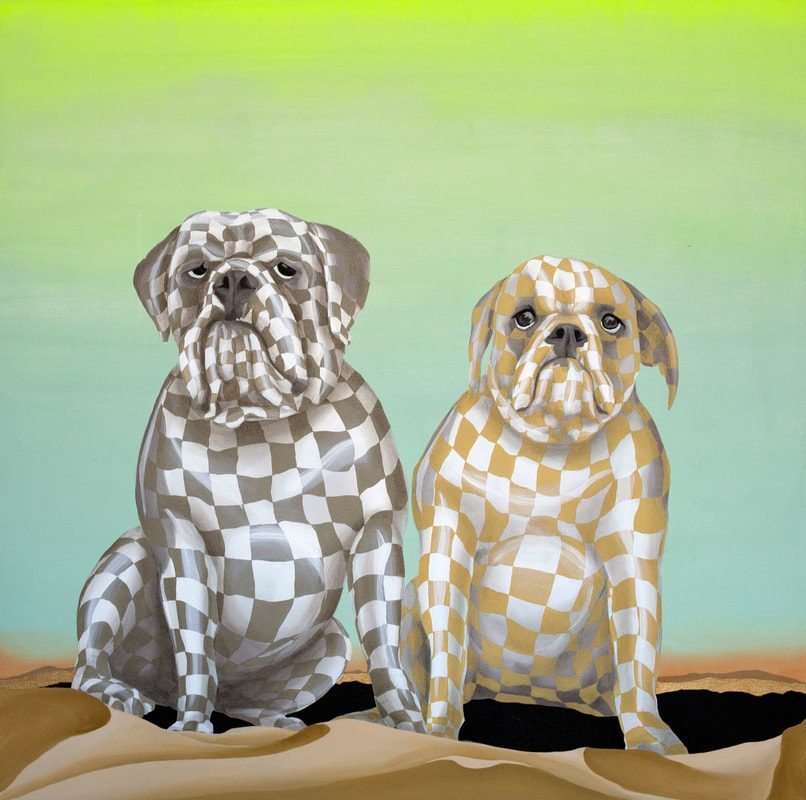
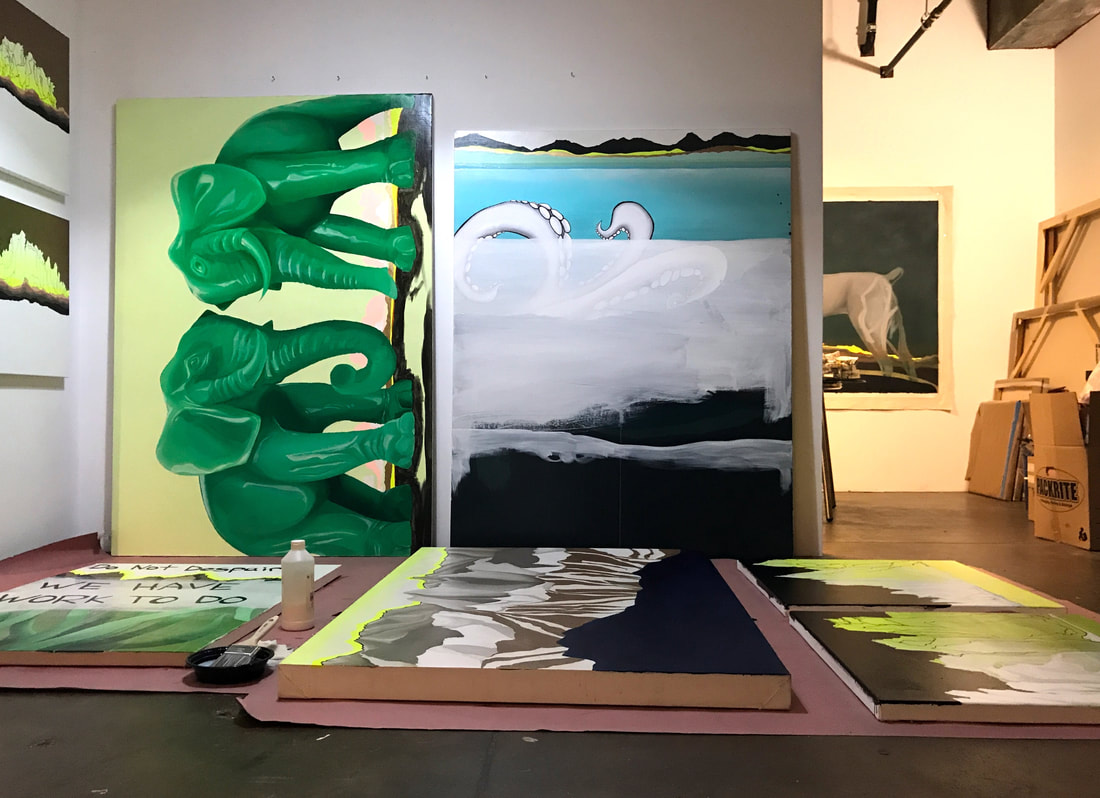
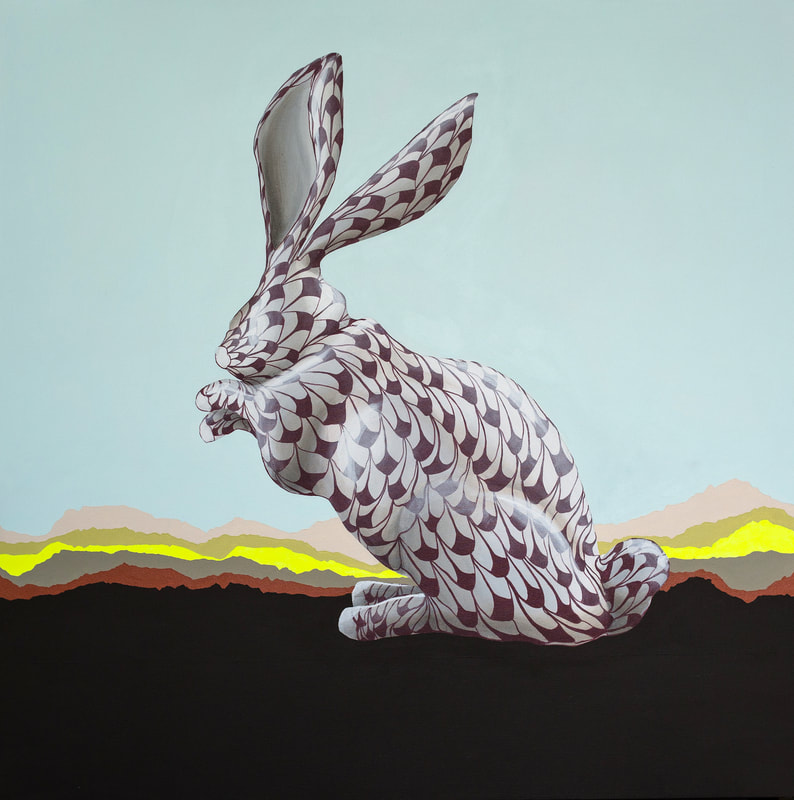
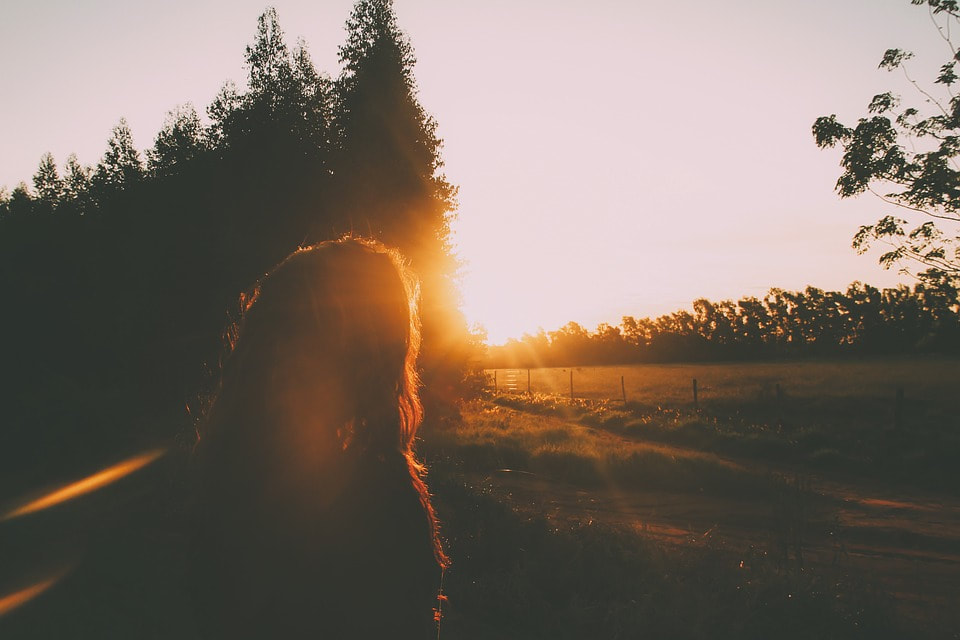
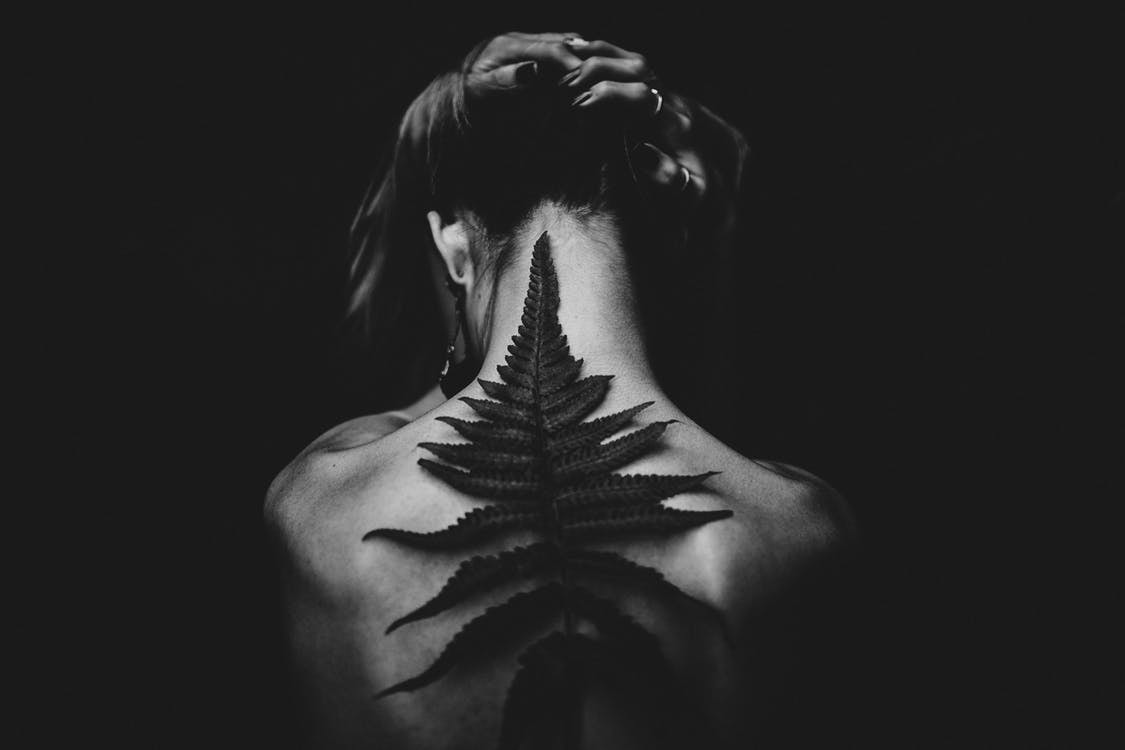
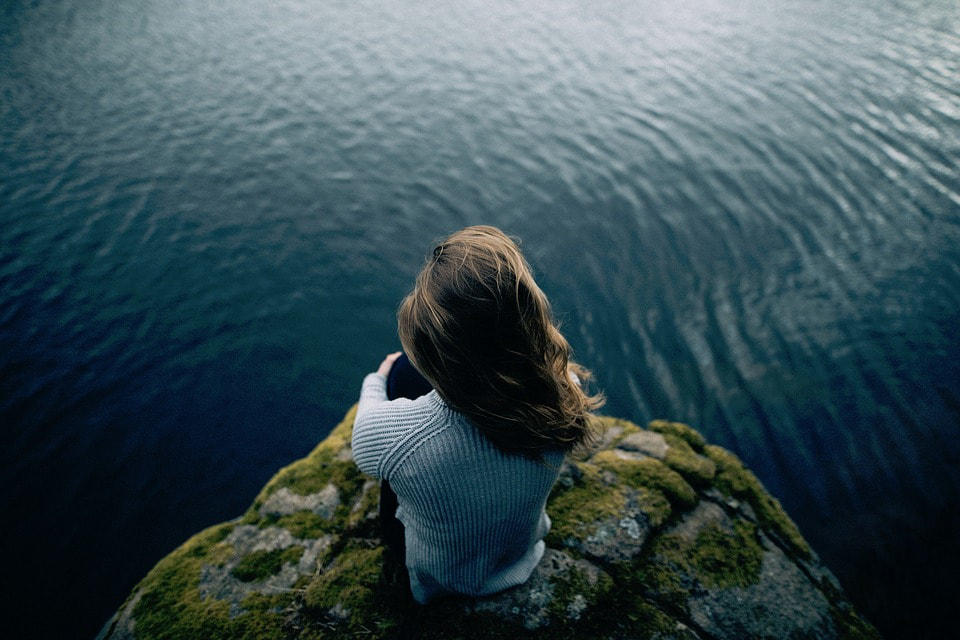
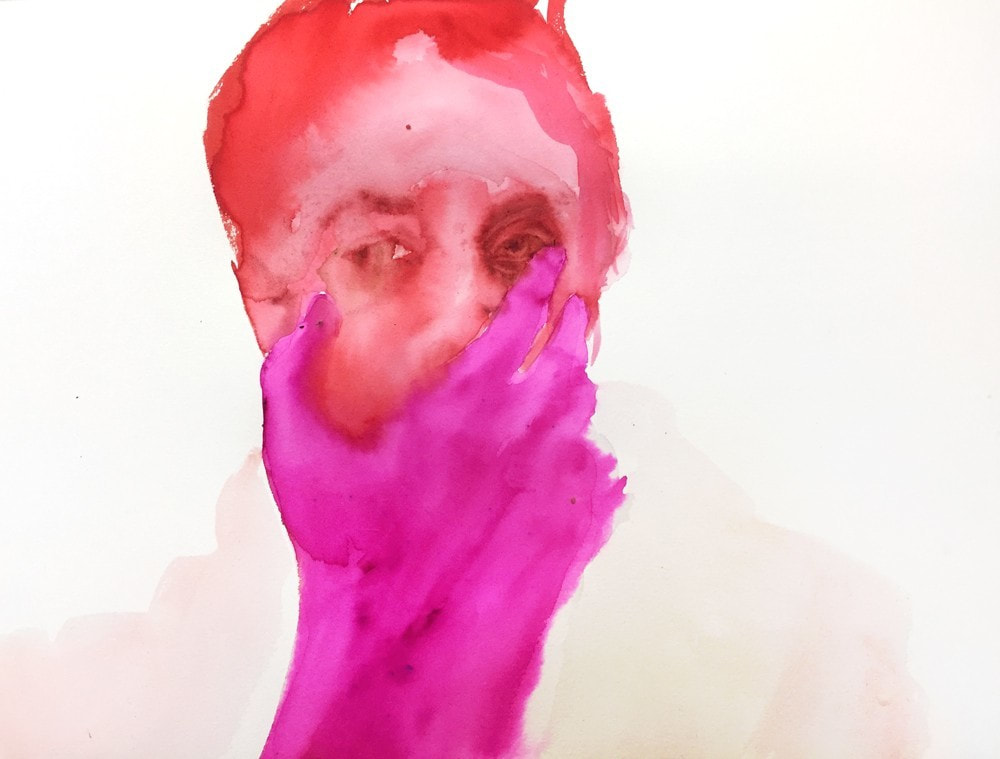
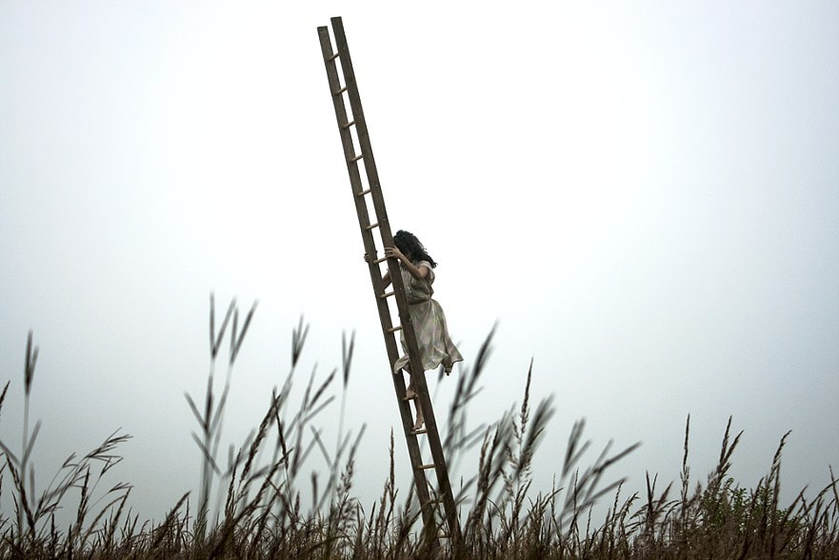
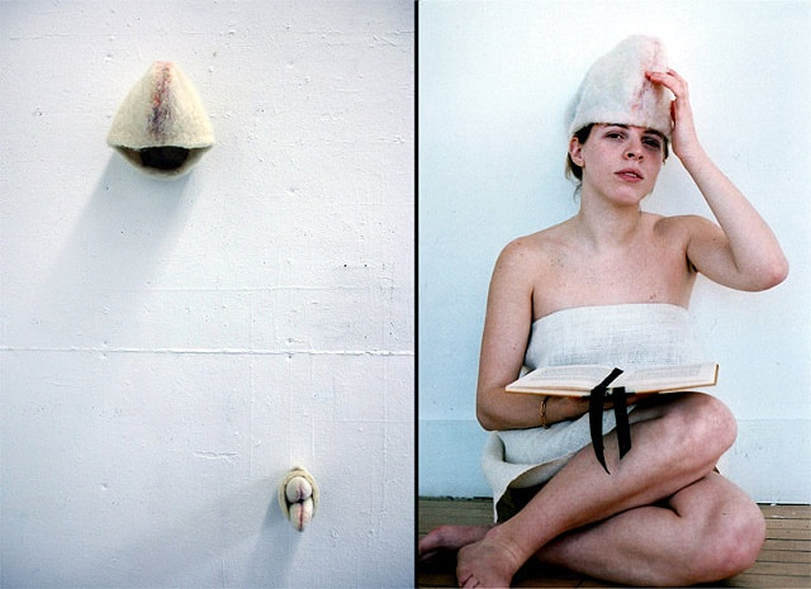
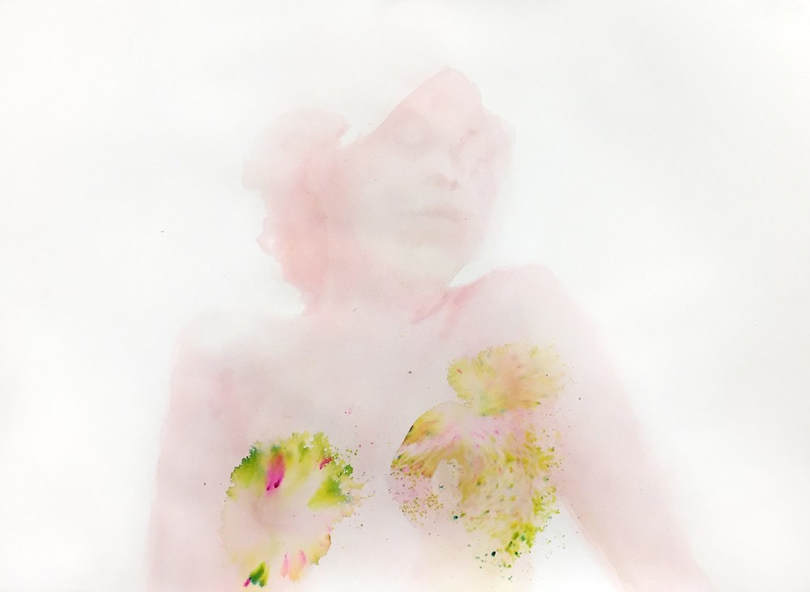
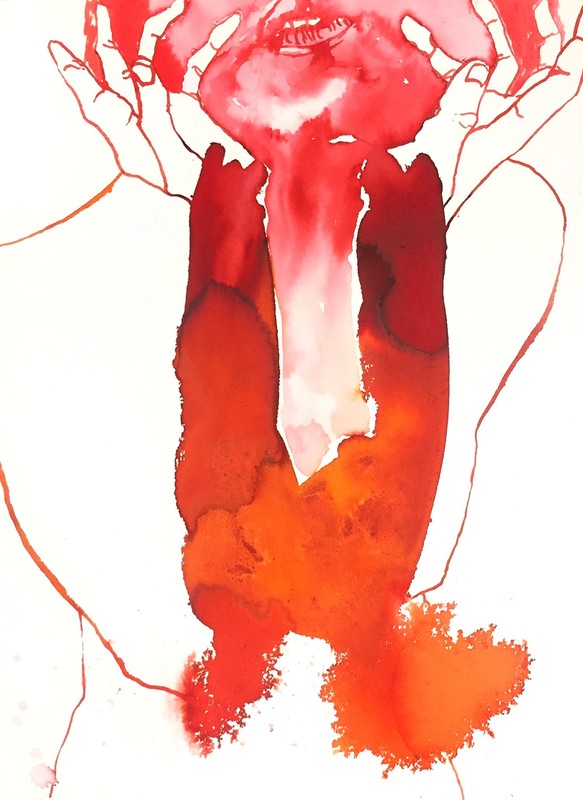
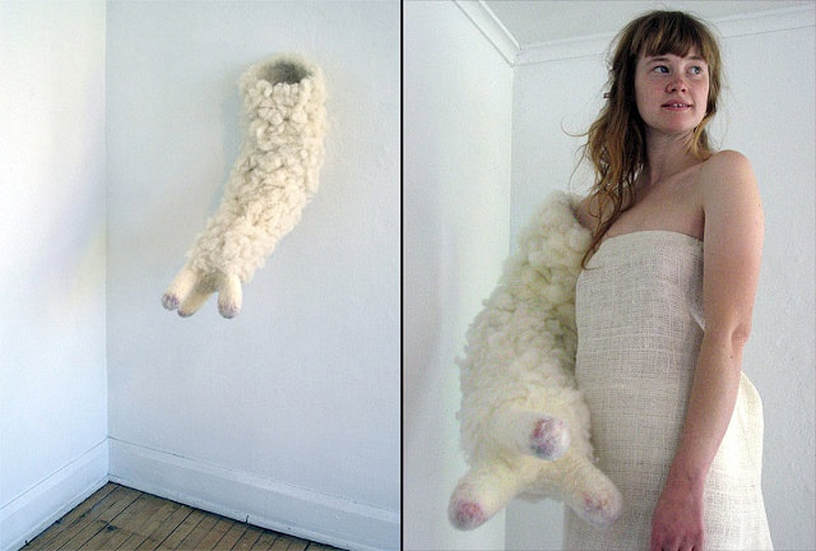
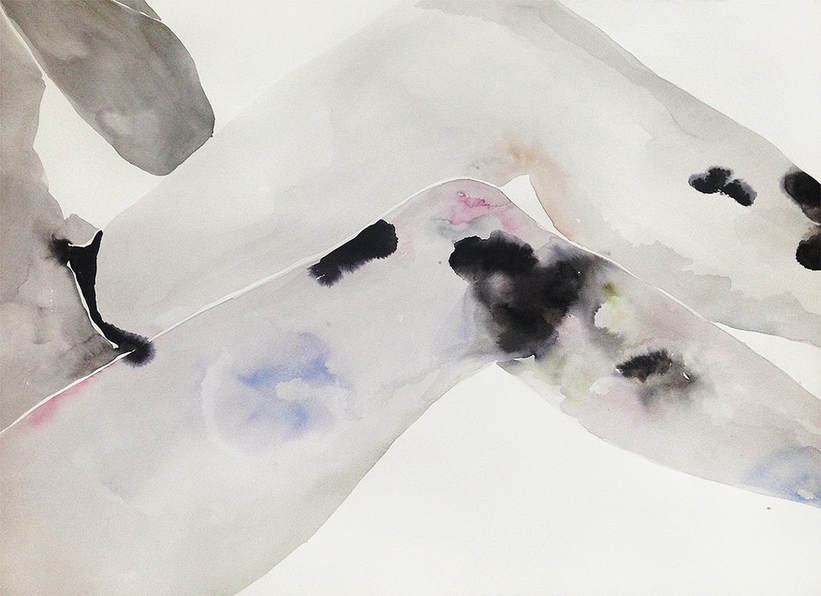
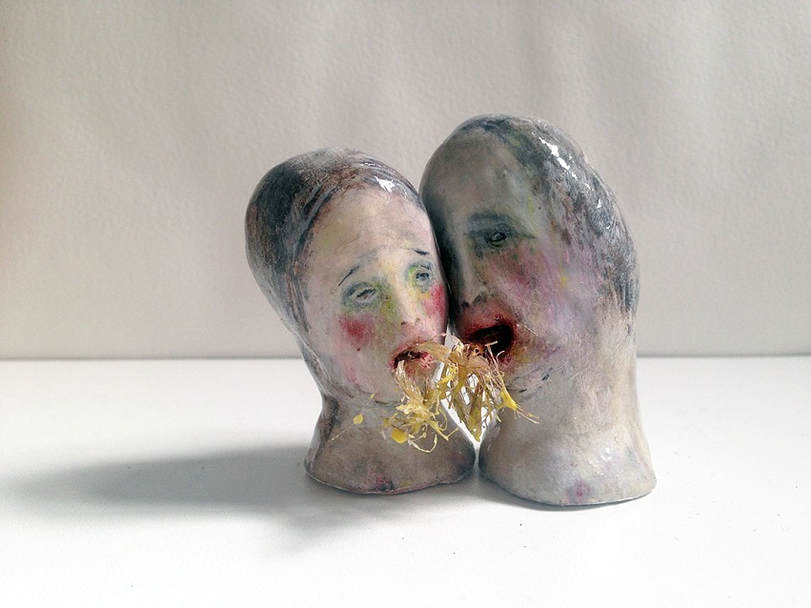
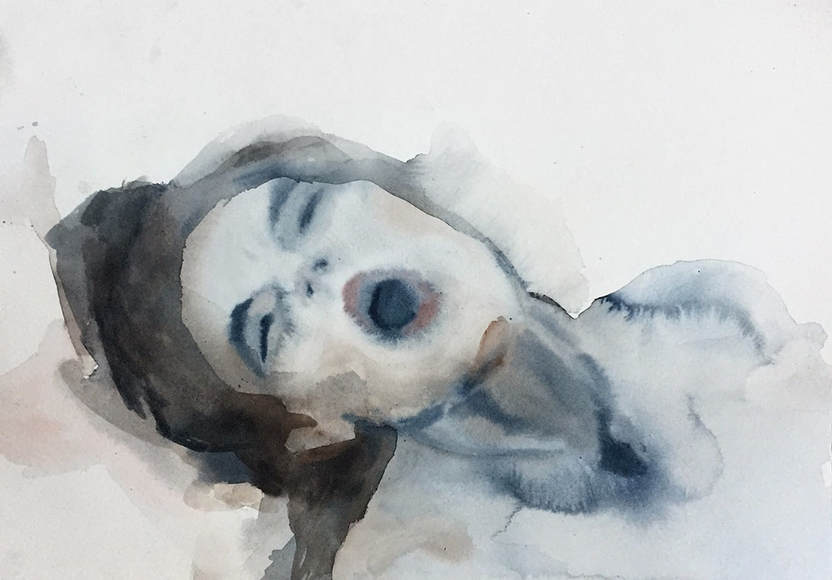
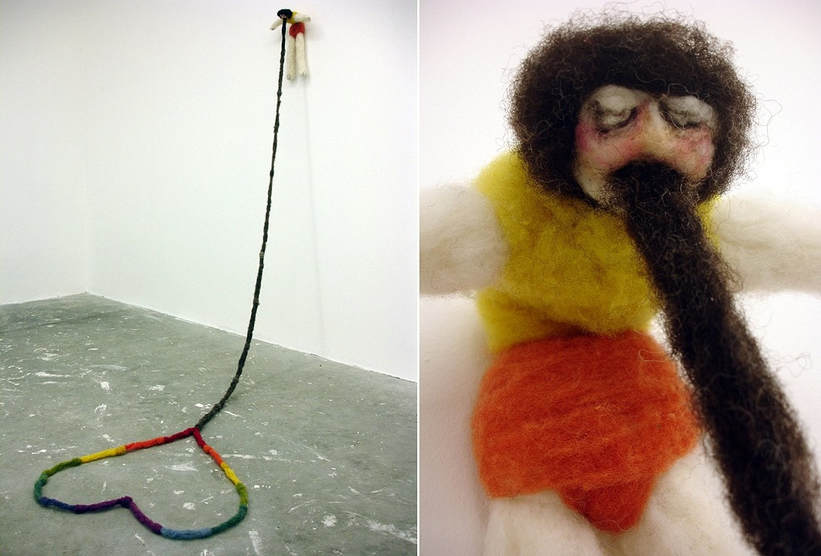
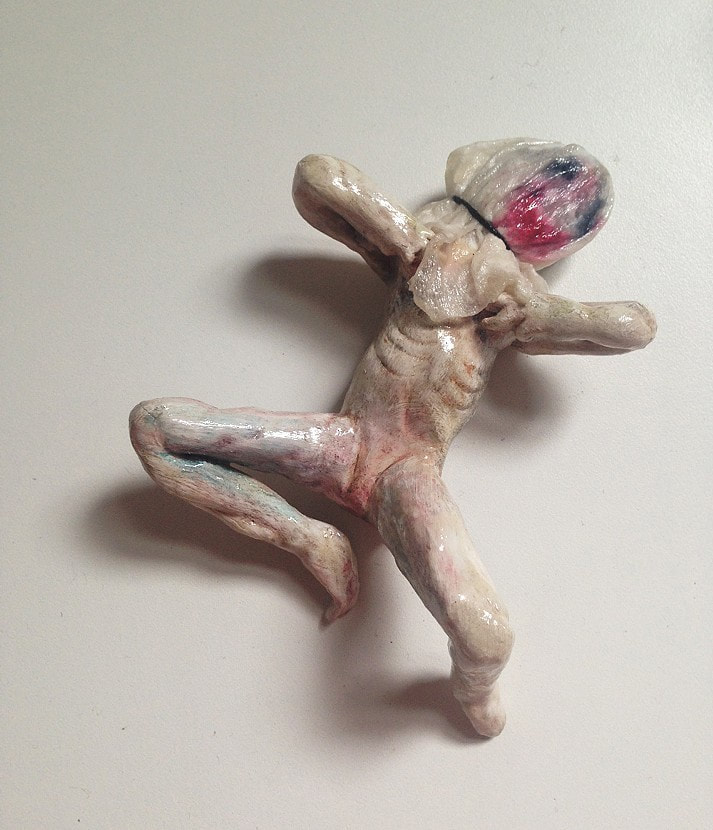
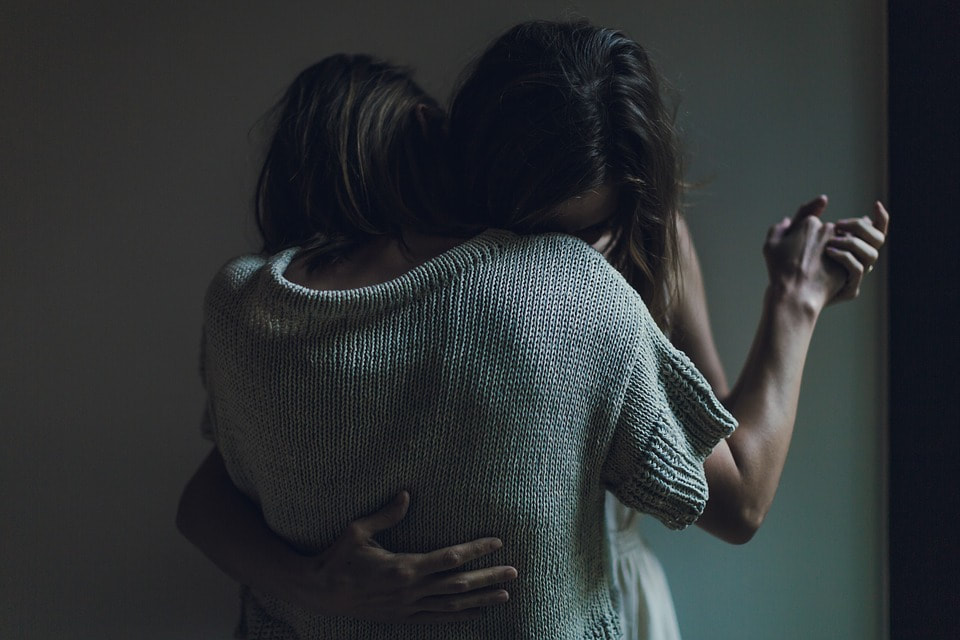
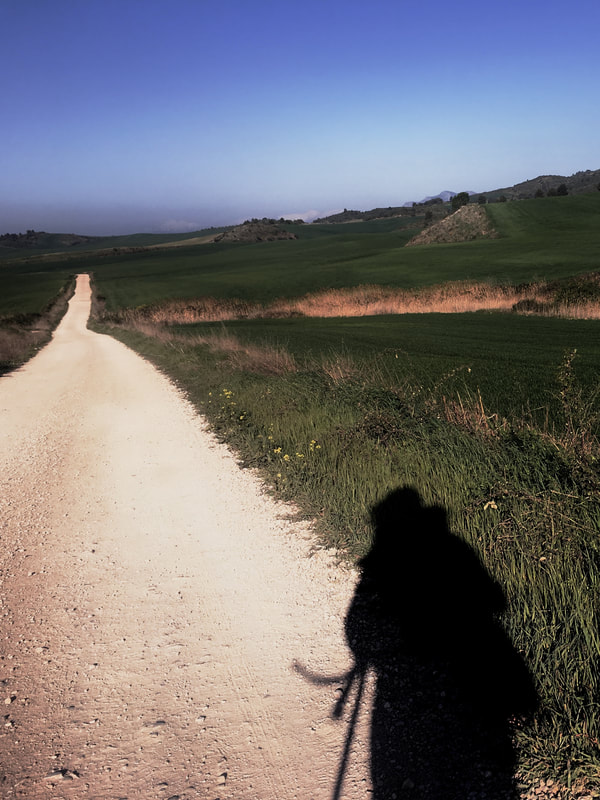
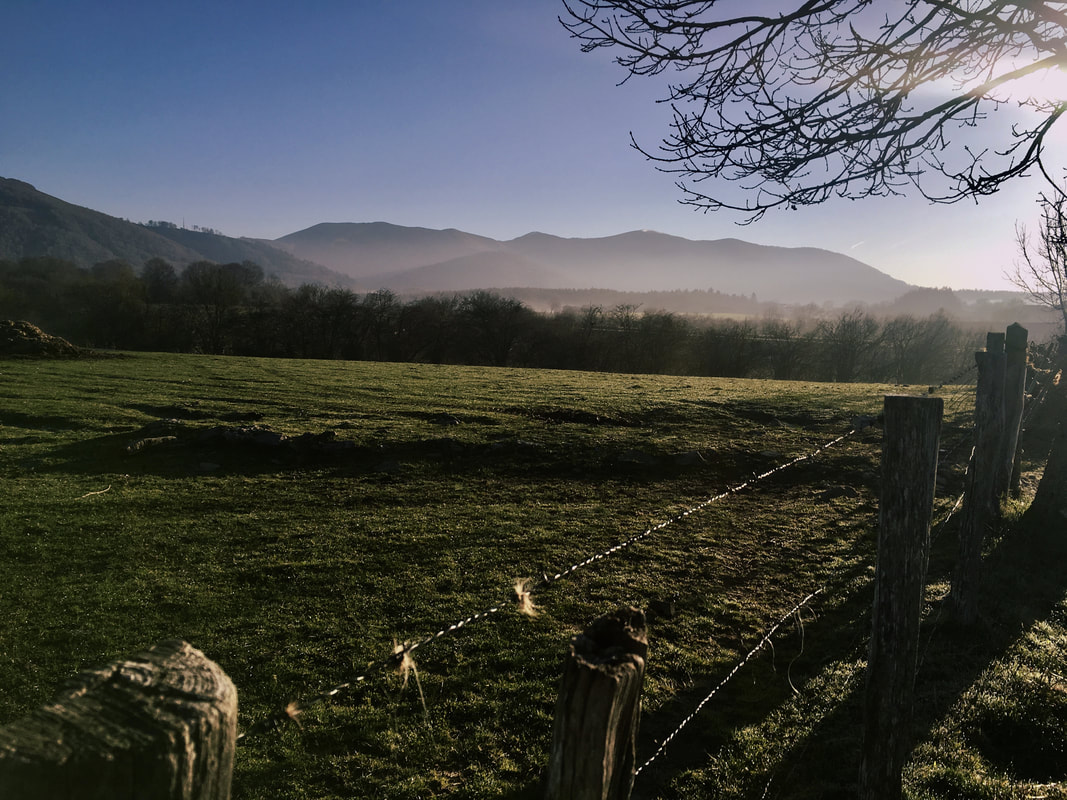
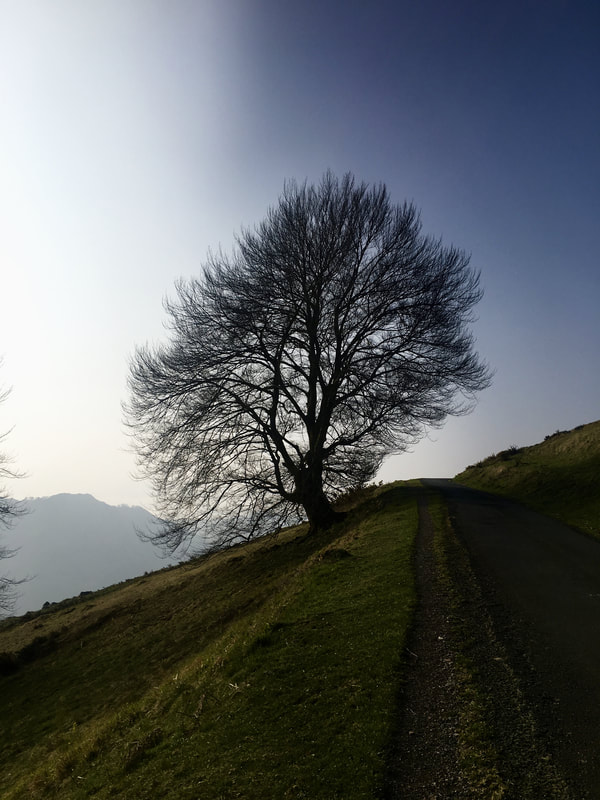
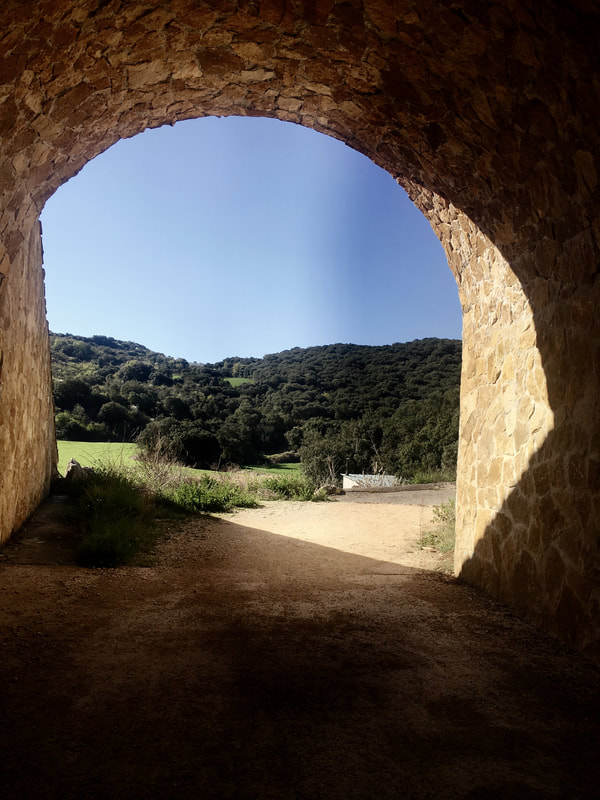
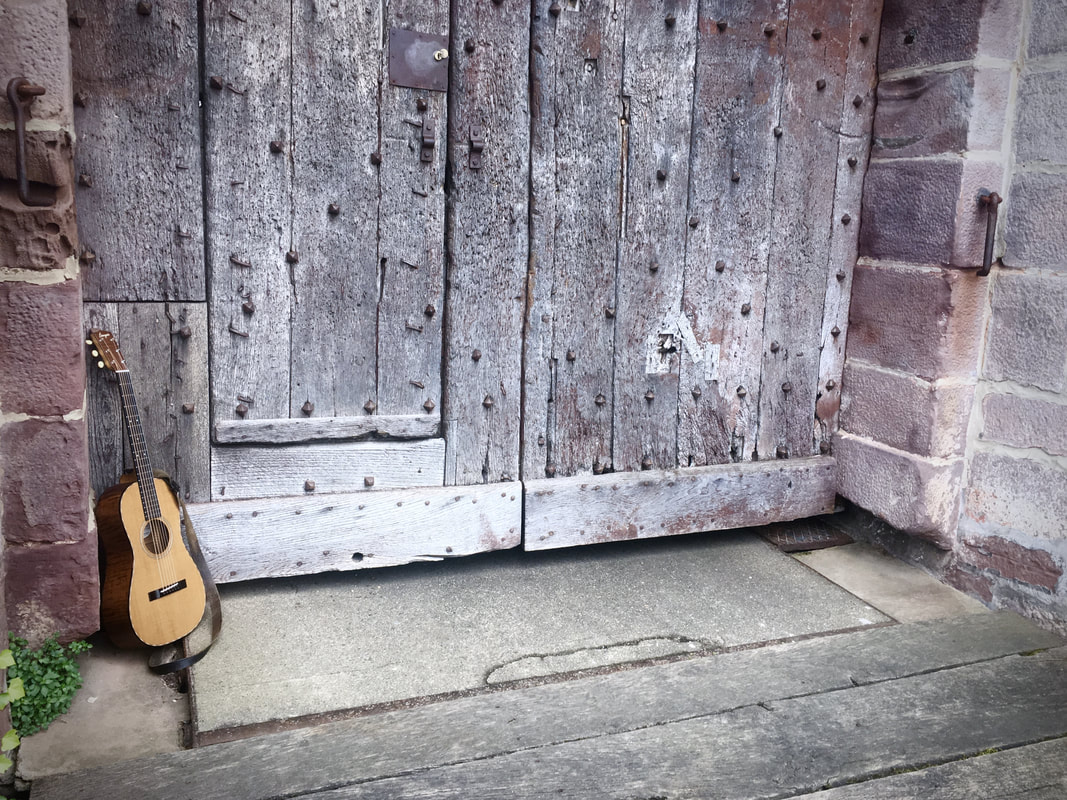
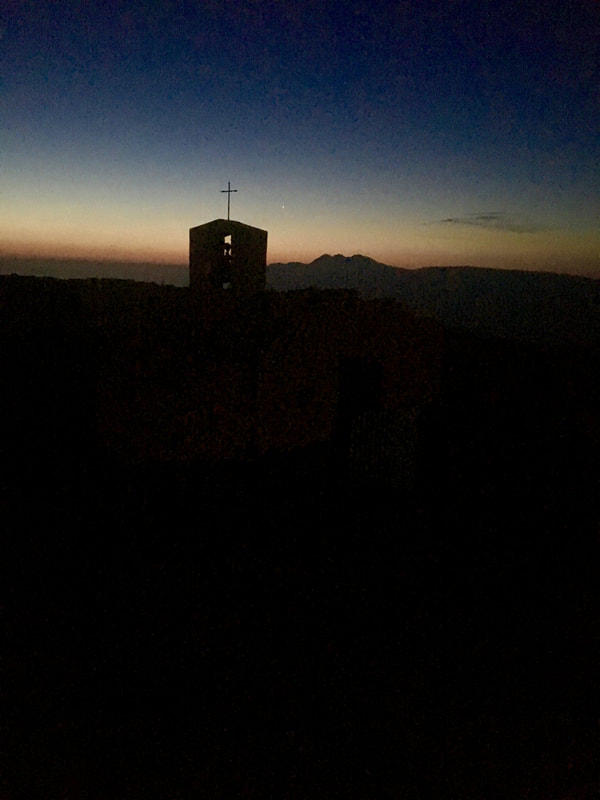
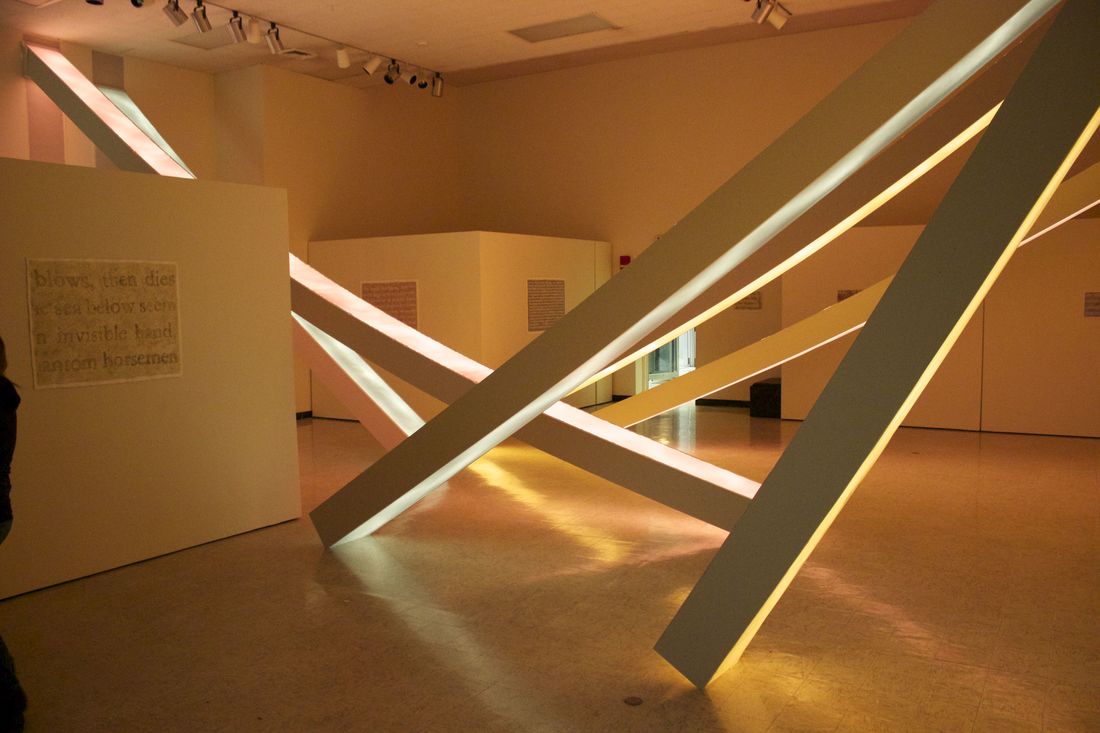
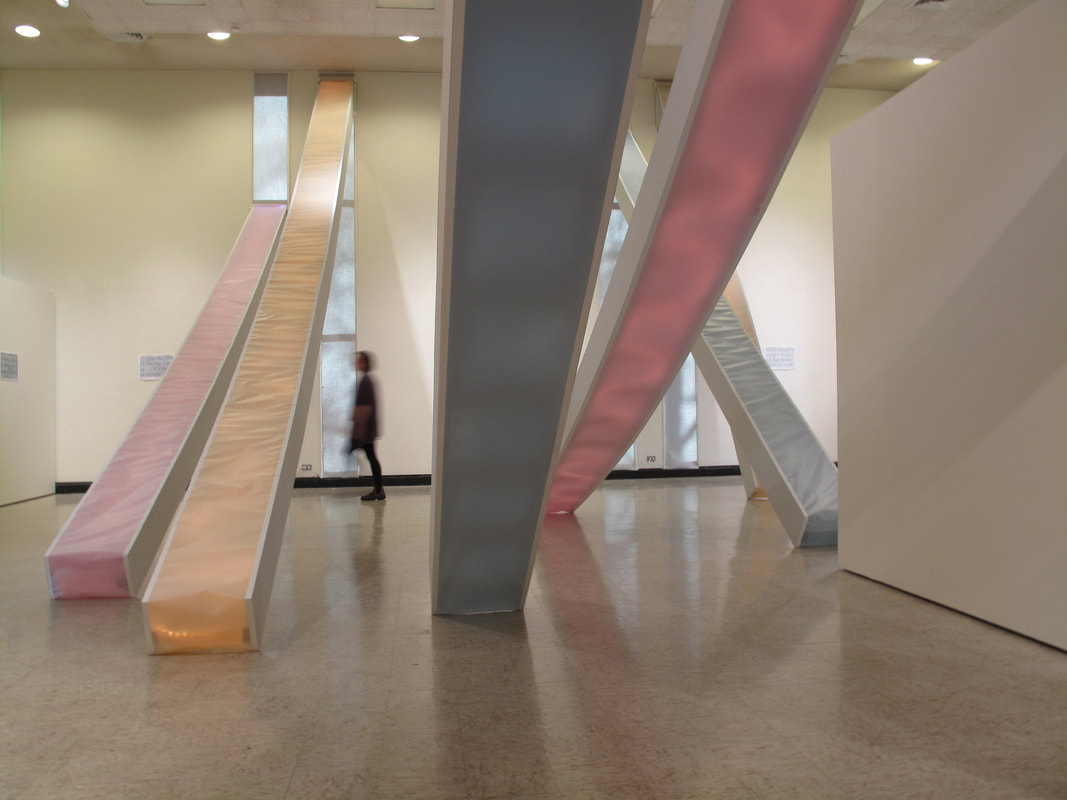
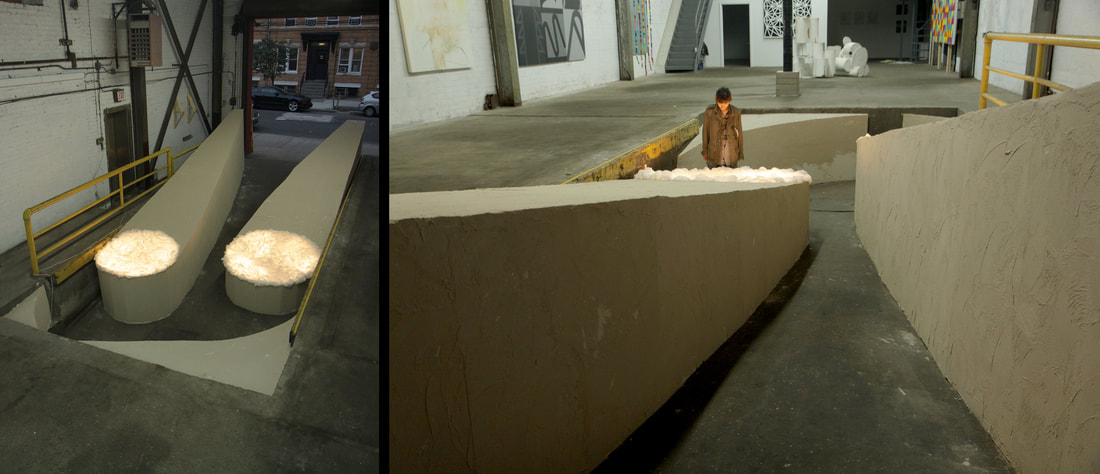
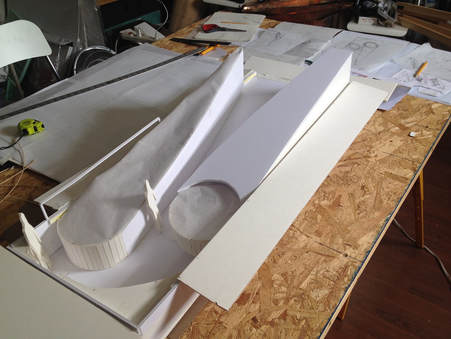
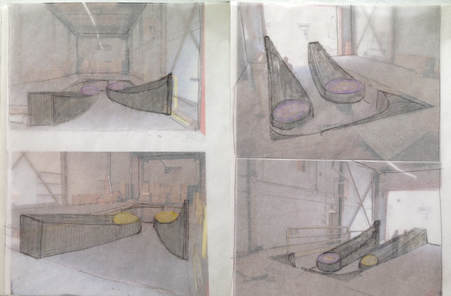
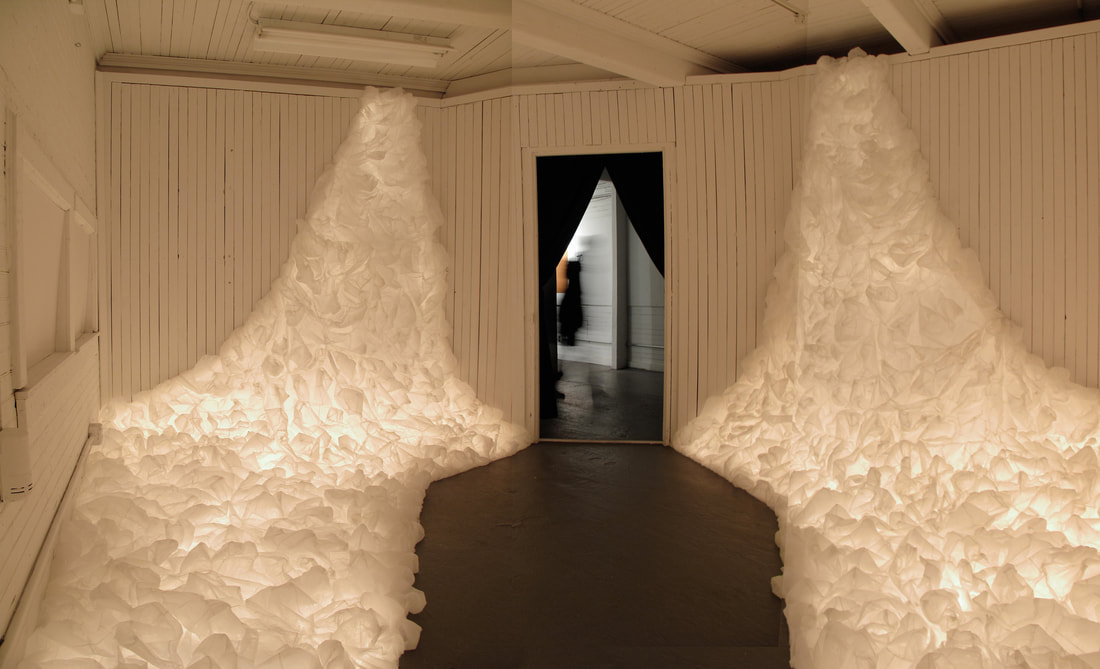
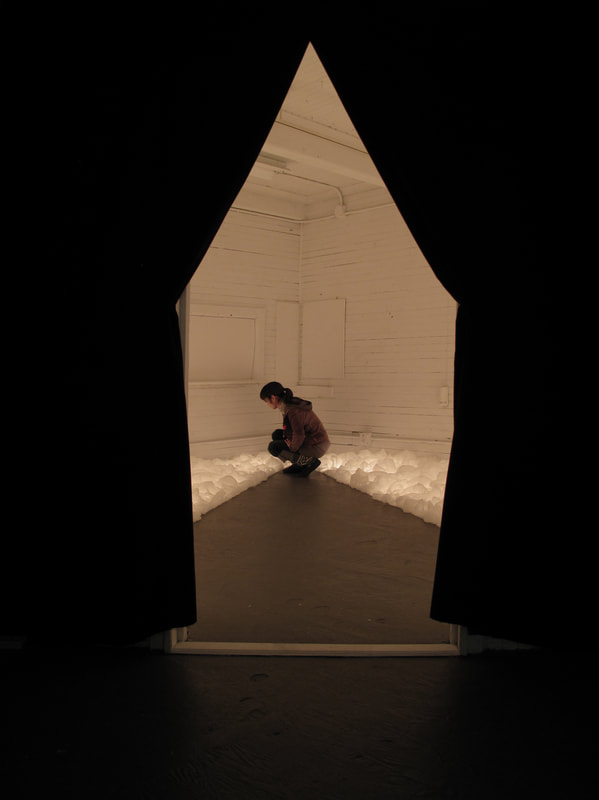
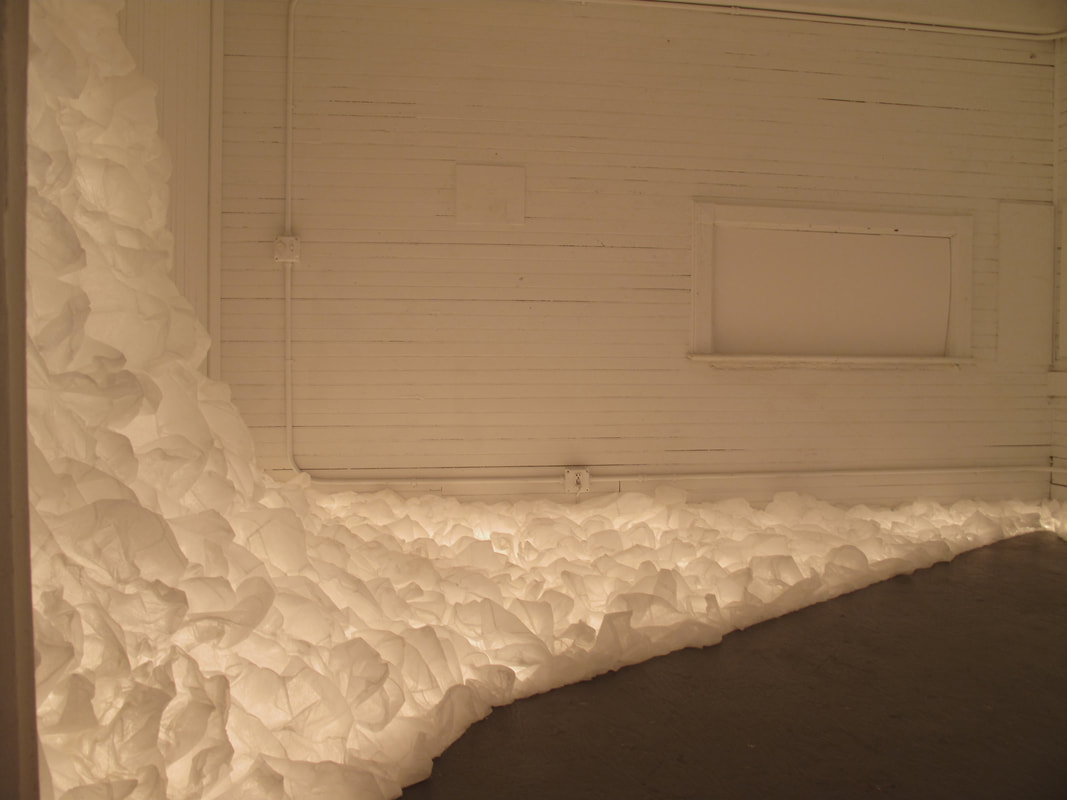
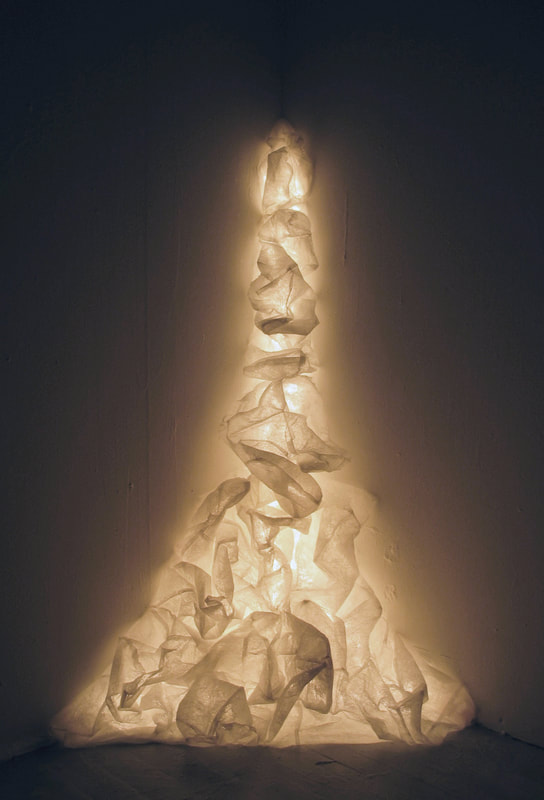
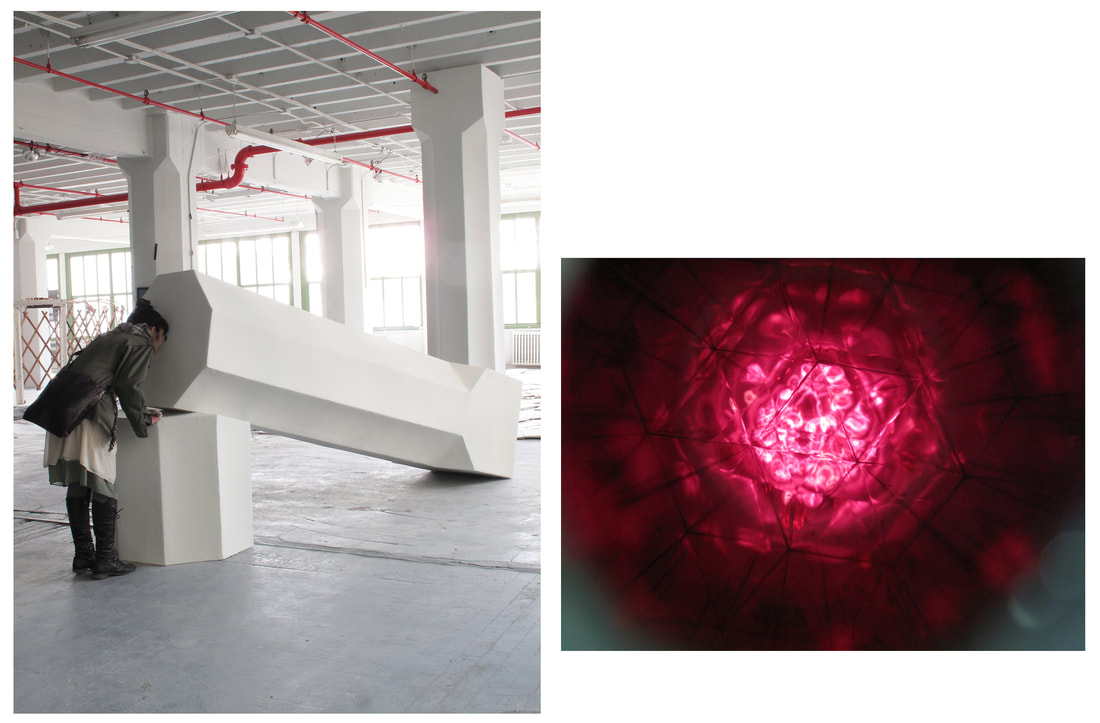
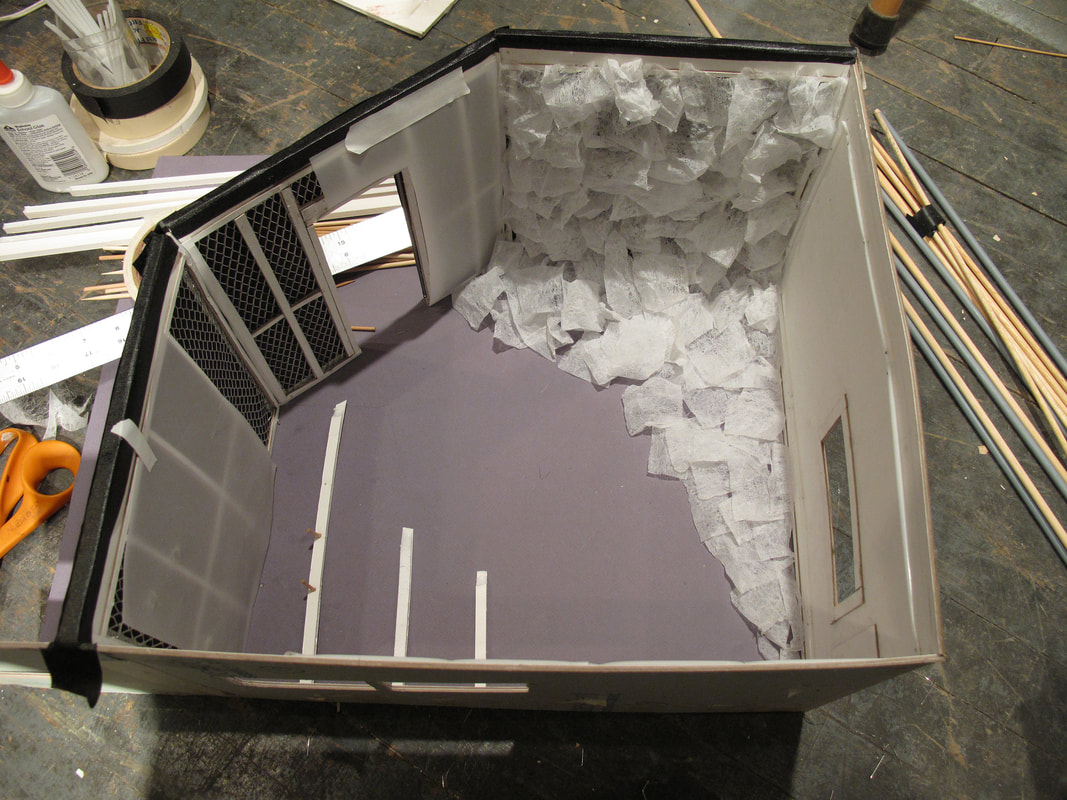
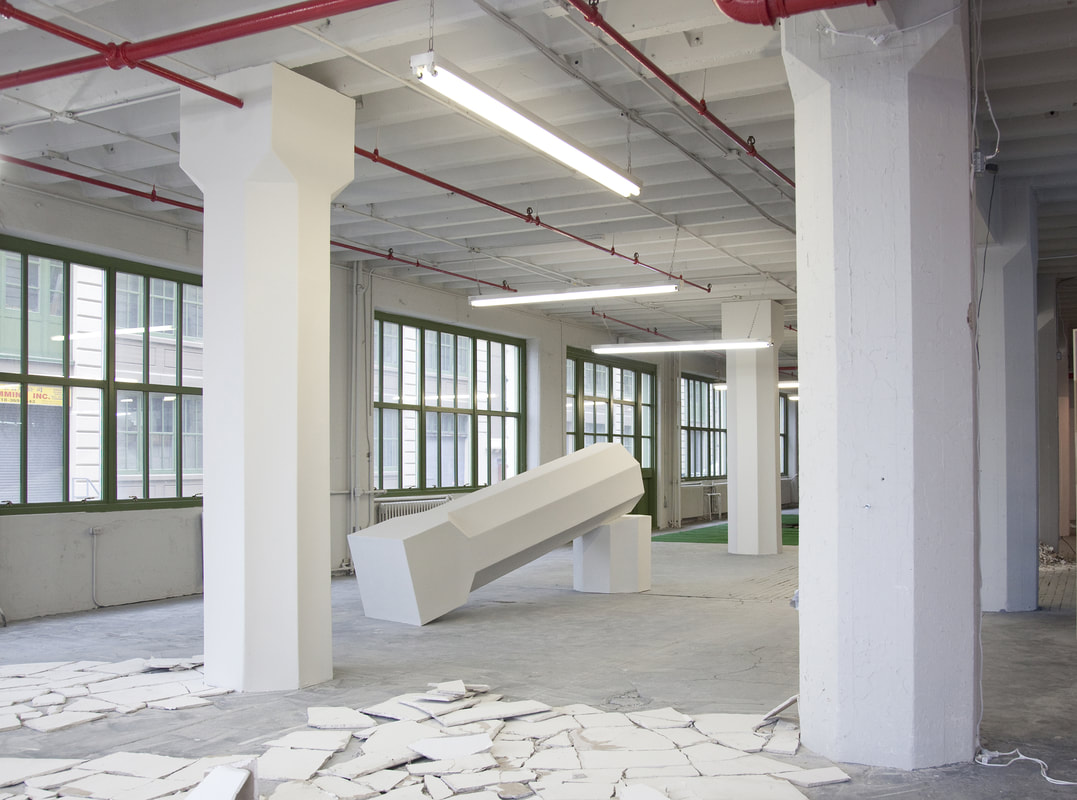
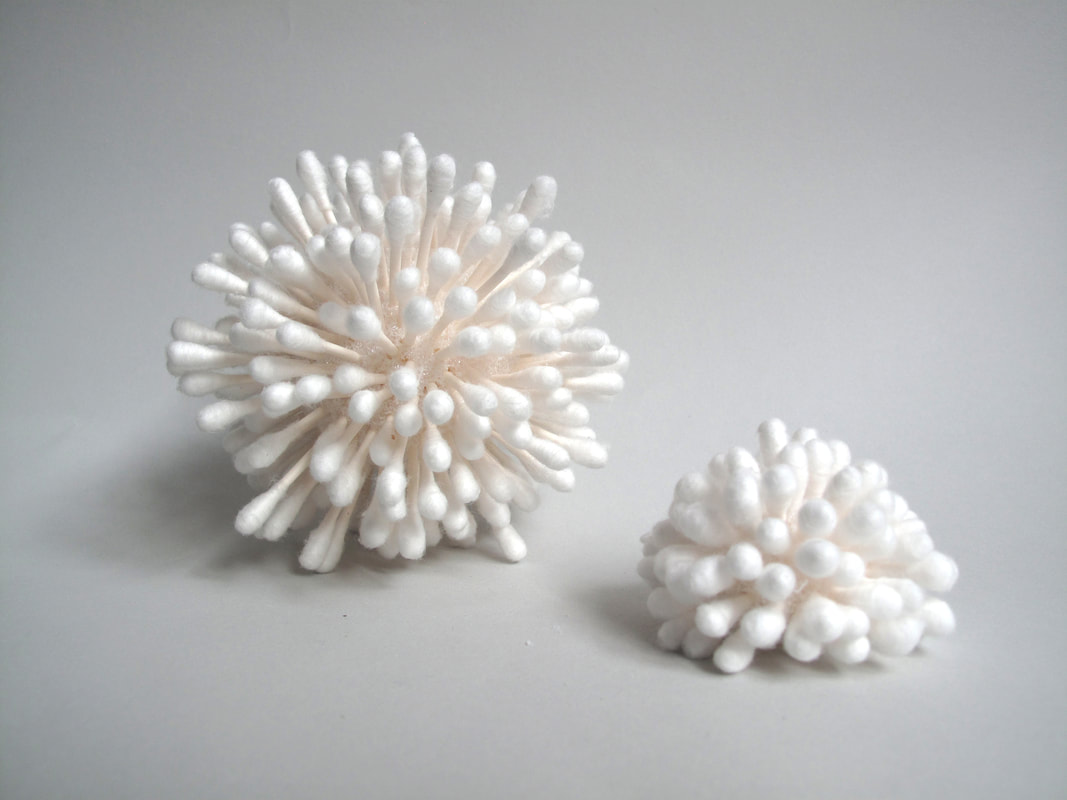
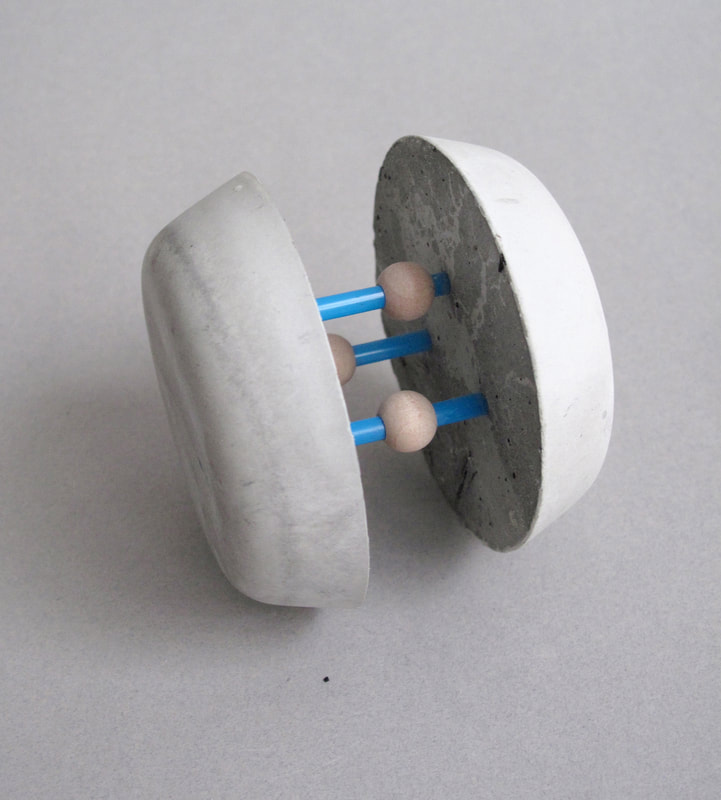
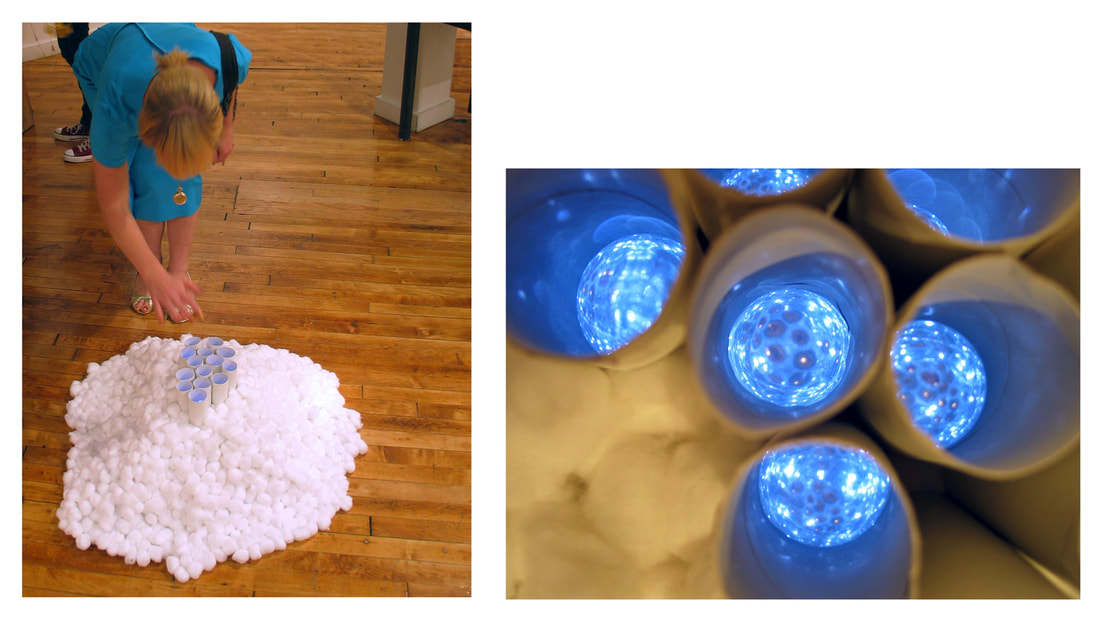
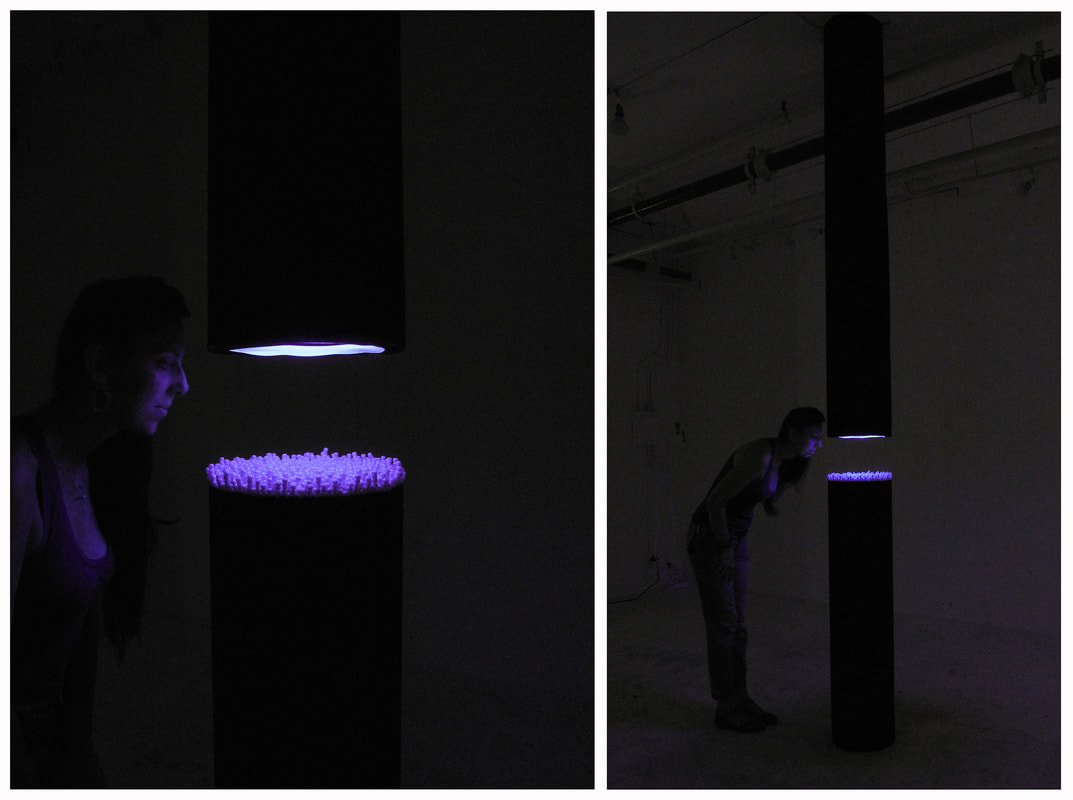
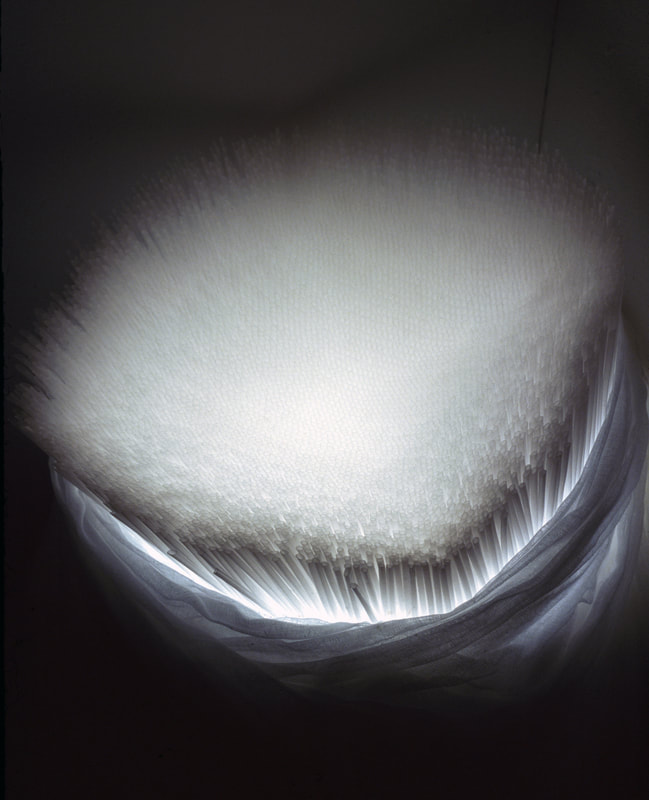
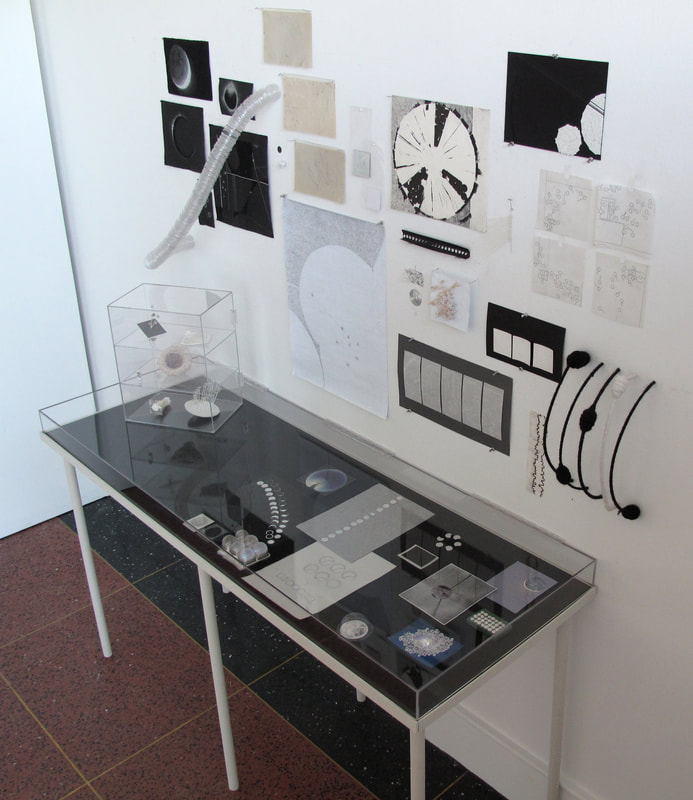
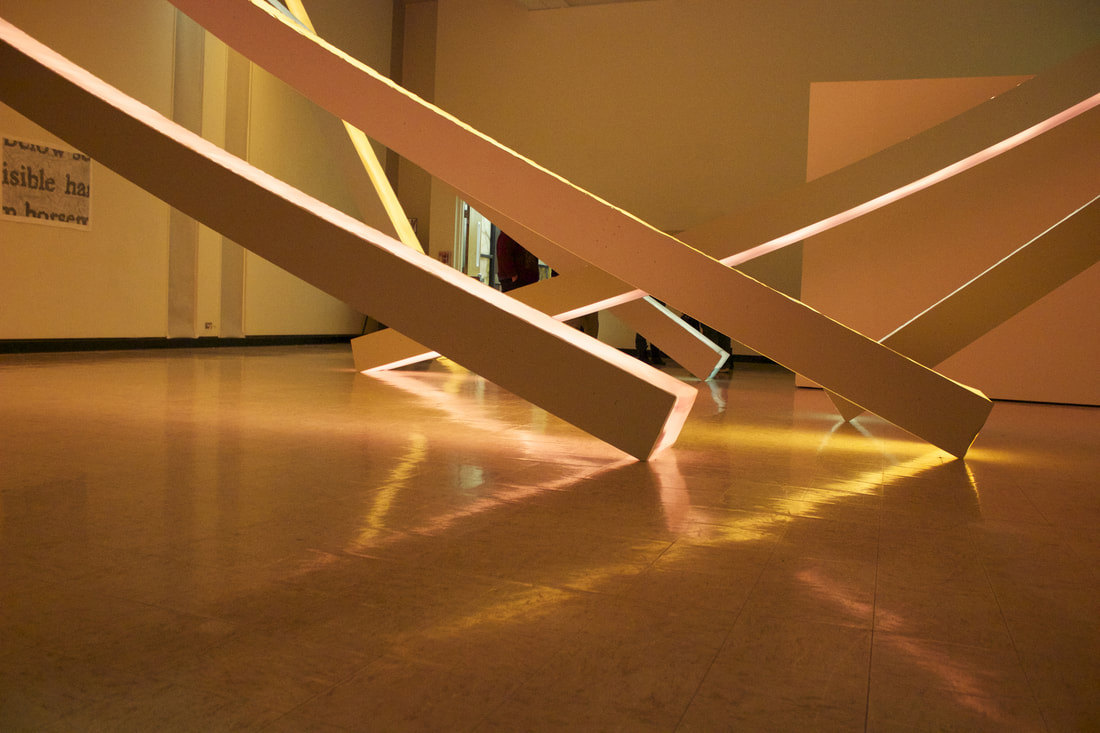
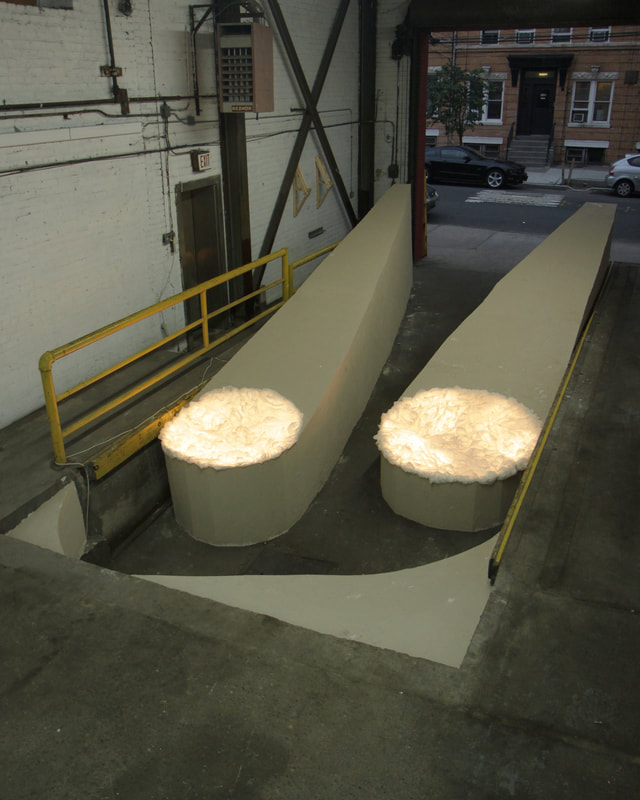

 RSS Feed
RSS Feed
